Decorative cereals in the garden: grade of herbs, features of creating cereal gardens and care, variants of landscape compositions
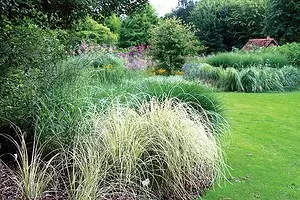
Grand Gardens are one of the trendy trends of landscape design. Another 3-4 years ago in Russia, cereals were considered weeds, and today they begin to appreciate them, they admire them. Having settled in the garden of cereals, you fill it with movement and music - whisper and rustles of pegs in the wind. Late in the fall and even in winter, covered with snow, they will turn into a decorative outfit for the asleep garden.
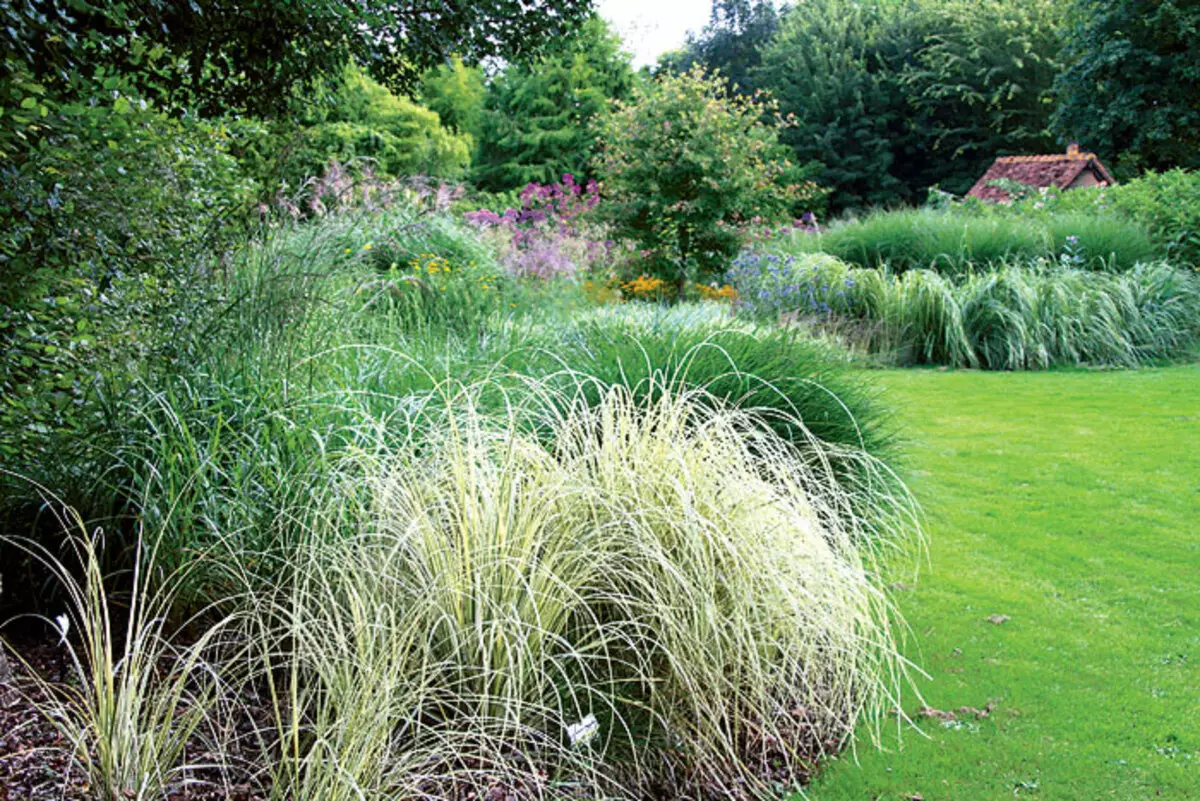
Decorative herbs are diverse in height (from 15 cm to 2-3m), coloring (there are cereals white, yellow, golden, green, red, gray) and "architecturality" (there are soft and hard, well-holding form). Visually lungs, many almost air, cereals are instantly responded to every barely intricant wind whiff. They are inclined in one direction, then to another, "whisper" with each other - and the garden seems to come to life. With a strong wind, the music of herbs becomes louder, anximately, but there is no other weather and can not be a song! Beautiful cereals covered with fog. Snow-sprinkled or painted in the snow are also beautiful, in its own way: in winter, their graphitics appears in winter. The cereals can be combined with blooming single and perennials, with coniferous or other shrubs or disembark as soluters. Some of them are used to compile compositions from dried flowers: the shakes are beautifully disrupting flat spikelets, the Lagurus- soft fluffy metels, for reeds, on the contrary, large panicles, whose length can reach 40cm.
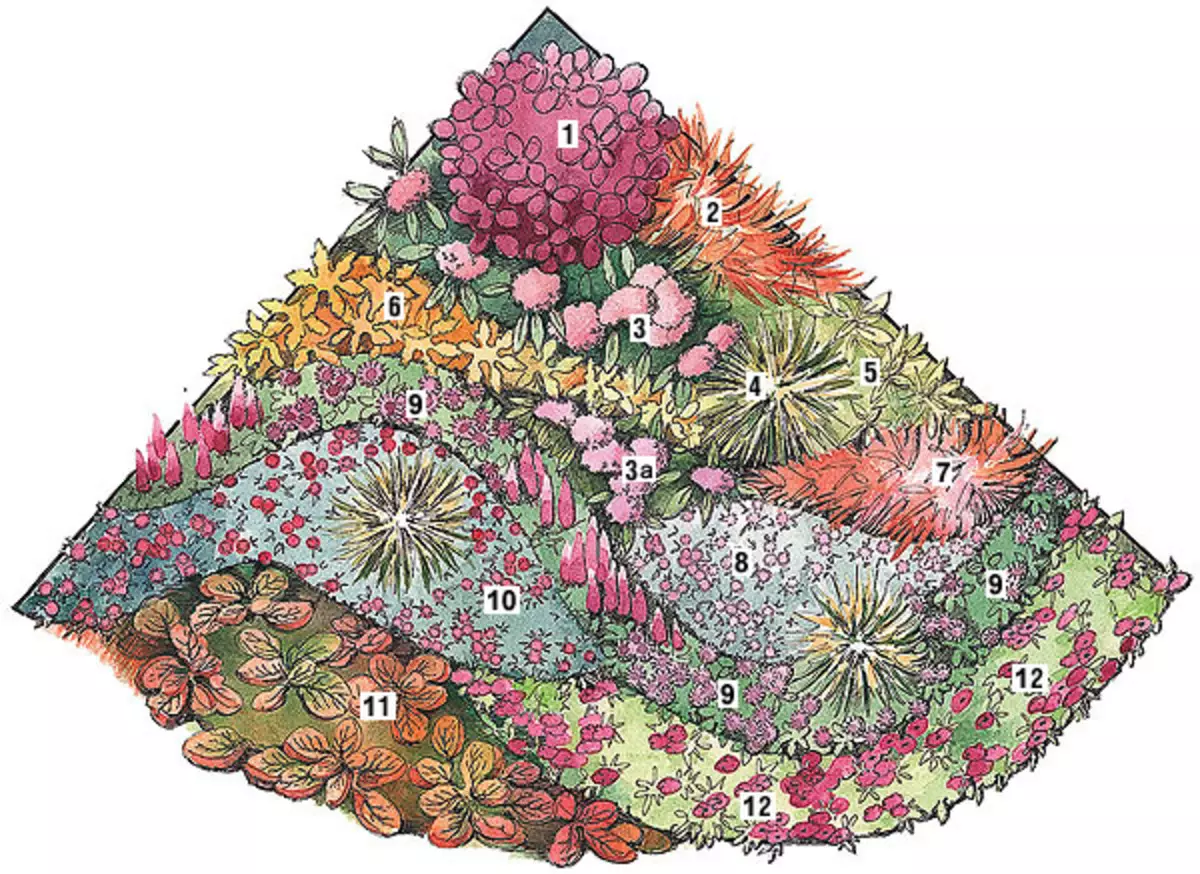
The period of maximum decorativeness of this landscape flower bed is autumn, when most of the plants are painted in purple, raspberry and orange tones. From the cereals in the composition, three types with different textures are included in the composition: translucent clouds of TRANSPARENT MOLINE, ROTSILBER bright red fountains and as if the inflorescence of the Slavic-Self-Summer Scoop. A wave crossing a flower garden in the middle, "drawn" not one "paint", and a mixture of three: astranition Roma, the Astilbie of the Chinese Purpurlanze and Luka Atropurpureum. In the spring, on the spot, Narcissus will look good on the spot, but at the site of Astra - Hionodoxes. A special charm of the flower garden gives a combination of dirty-pink inflorescences of skimpics of the leather and tubing of the Siberian.
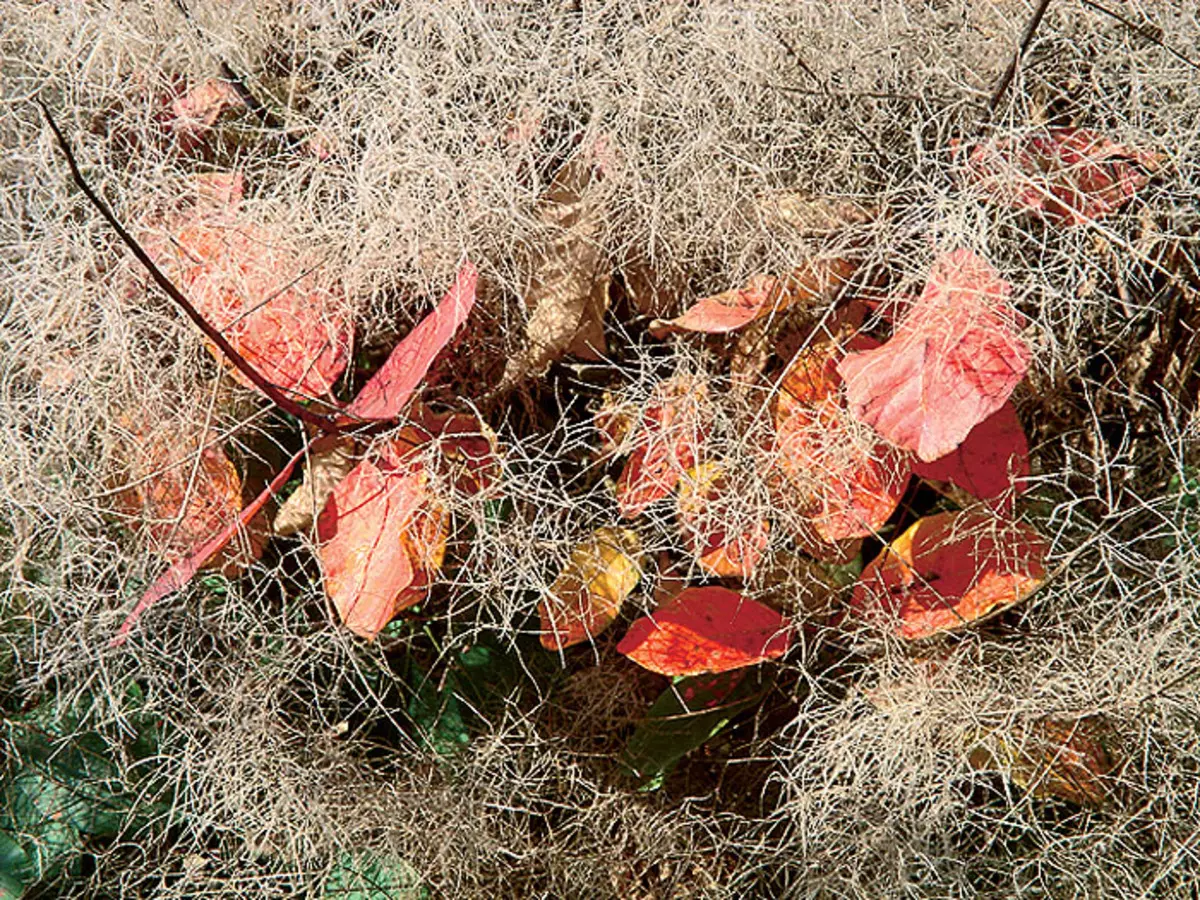
Skumpia leather | 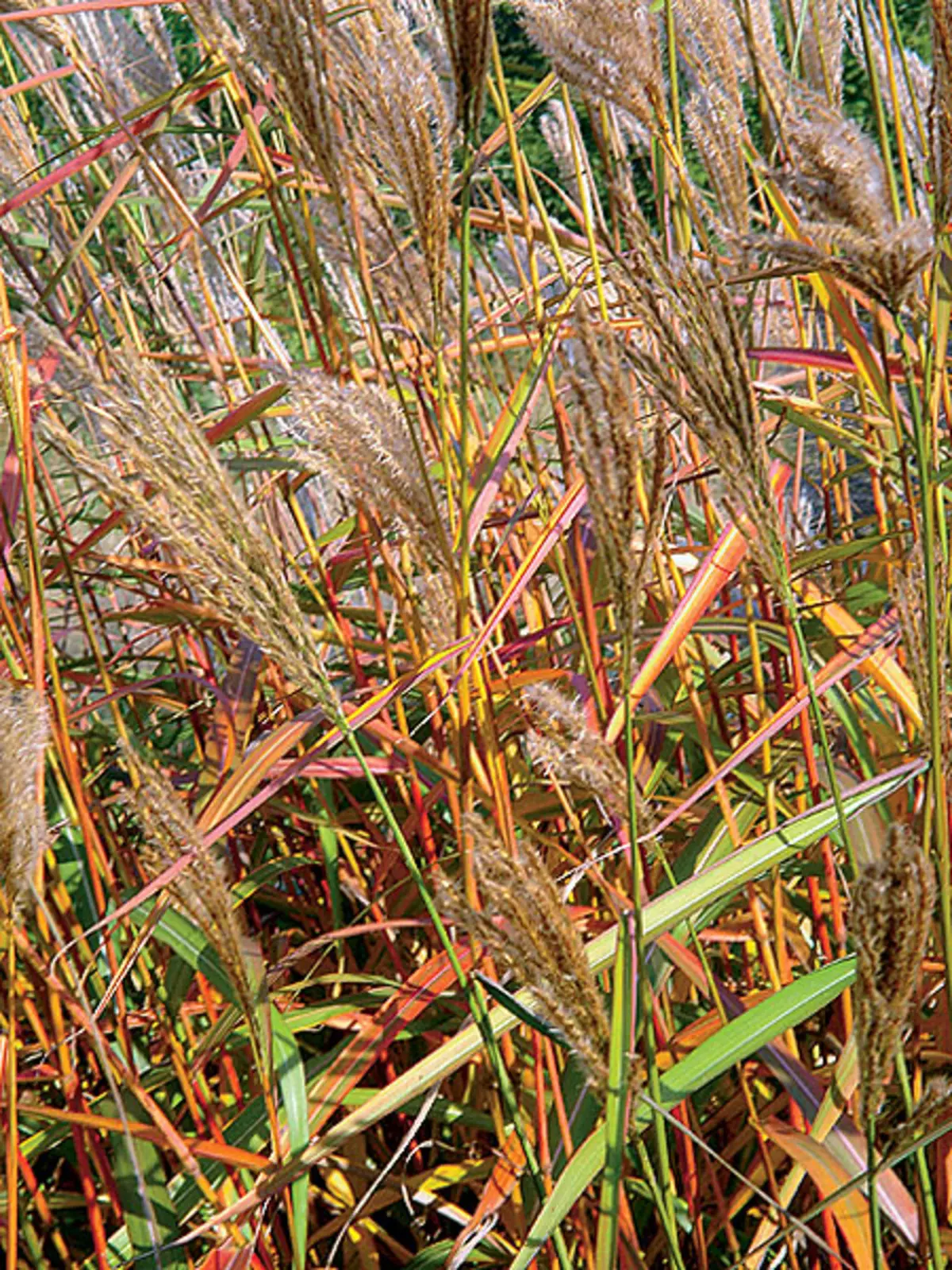
Miscantus Rotsilber. | 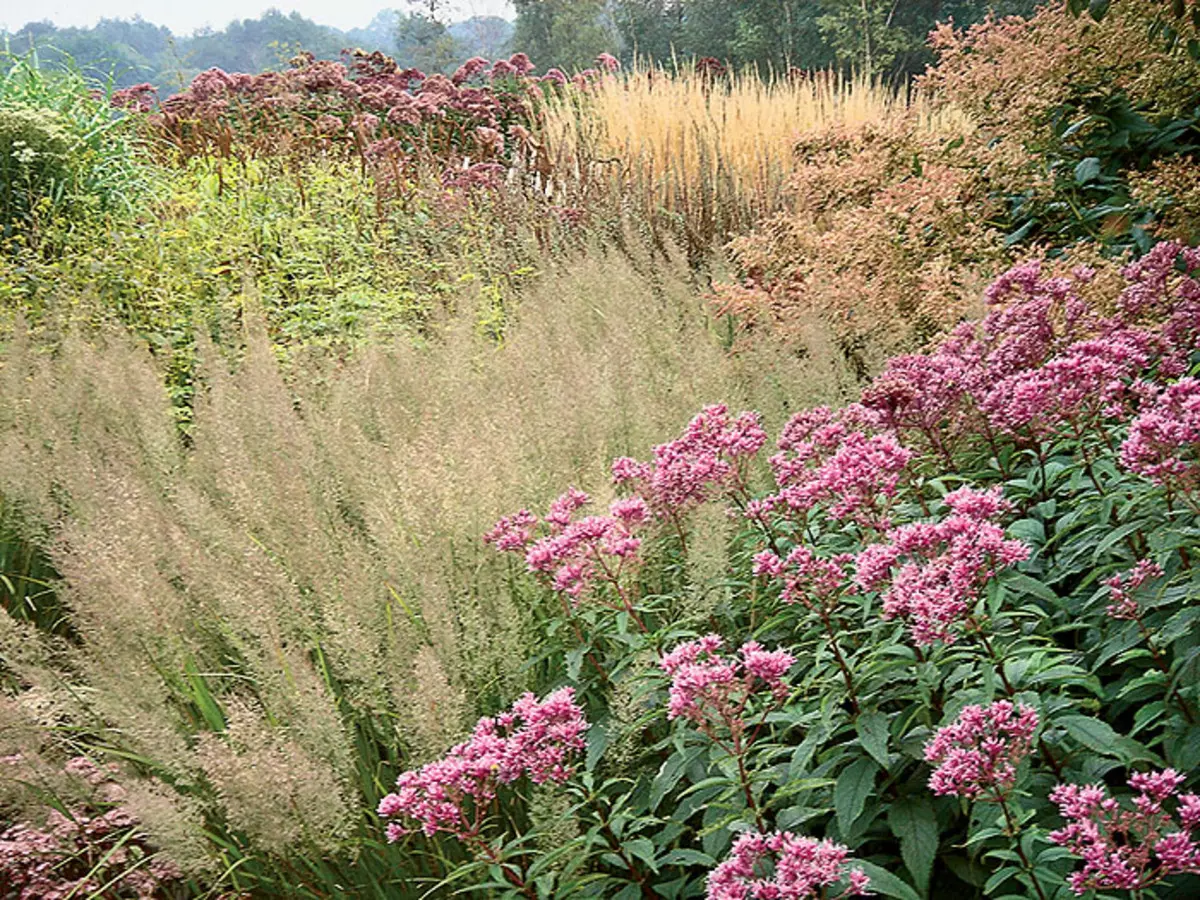
ATROPURPUREUM (3), PURPLE BUSH (3A) |
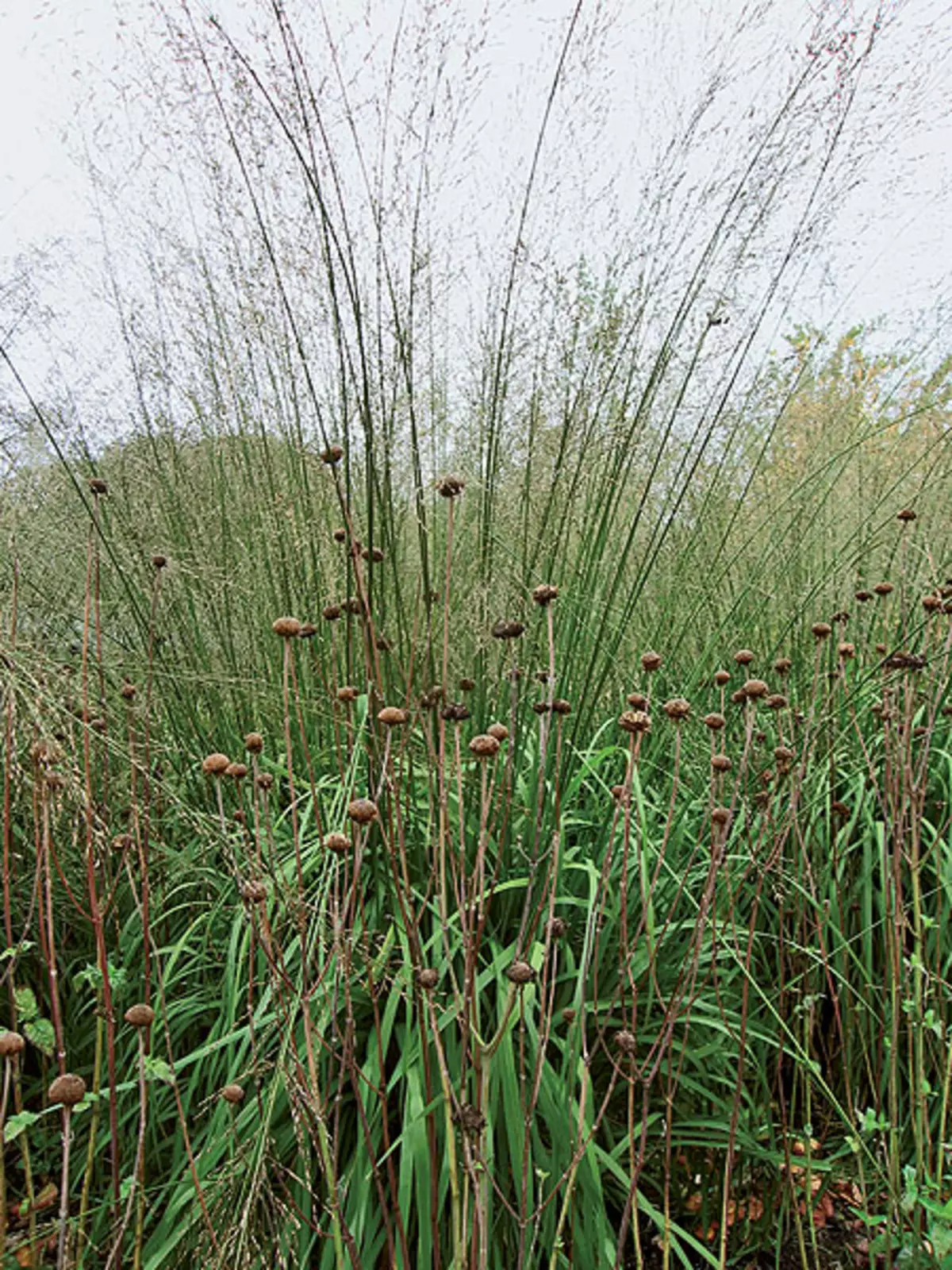
Praying Transparent | 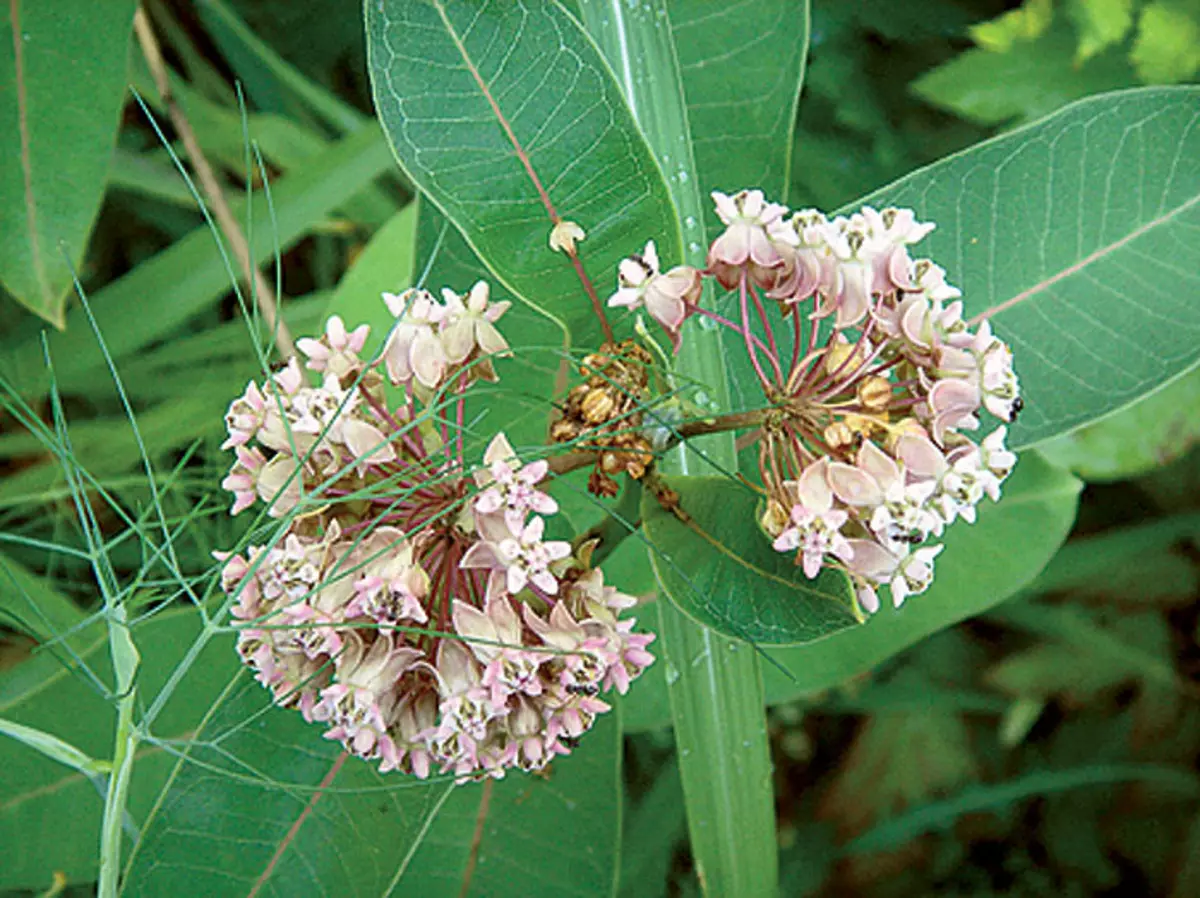
Vastechnik Sibirsky | 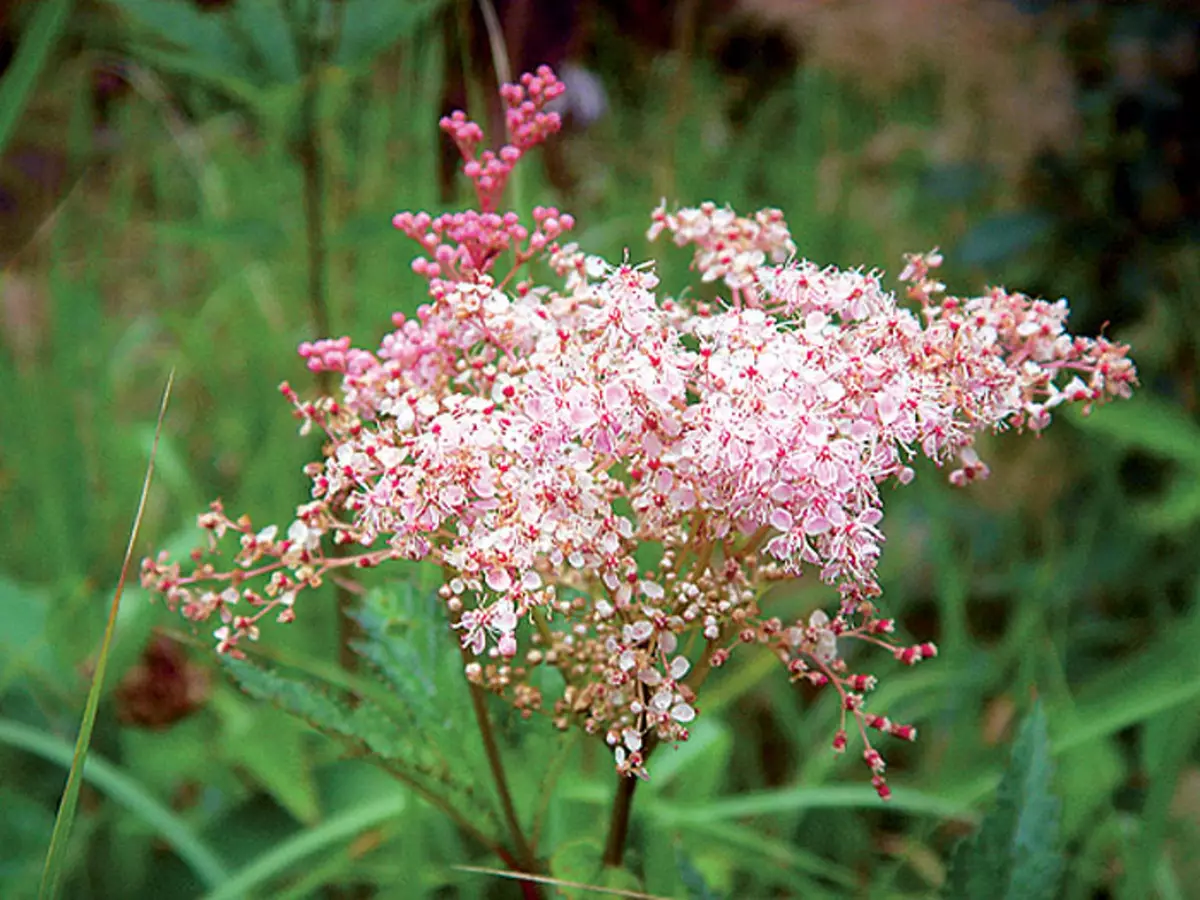
Labacian Red Venusta Magnifica |
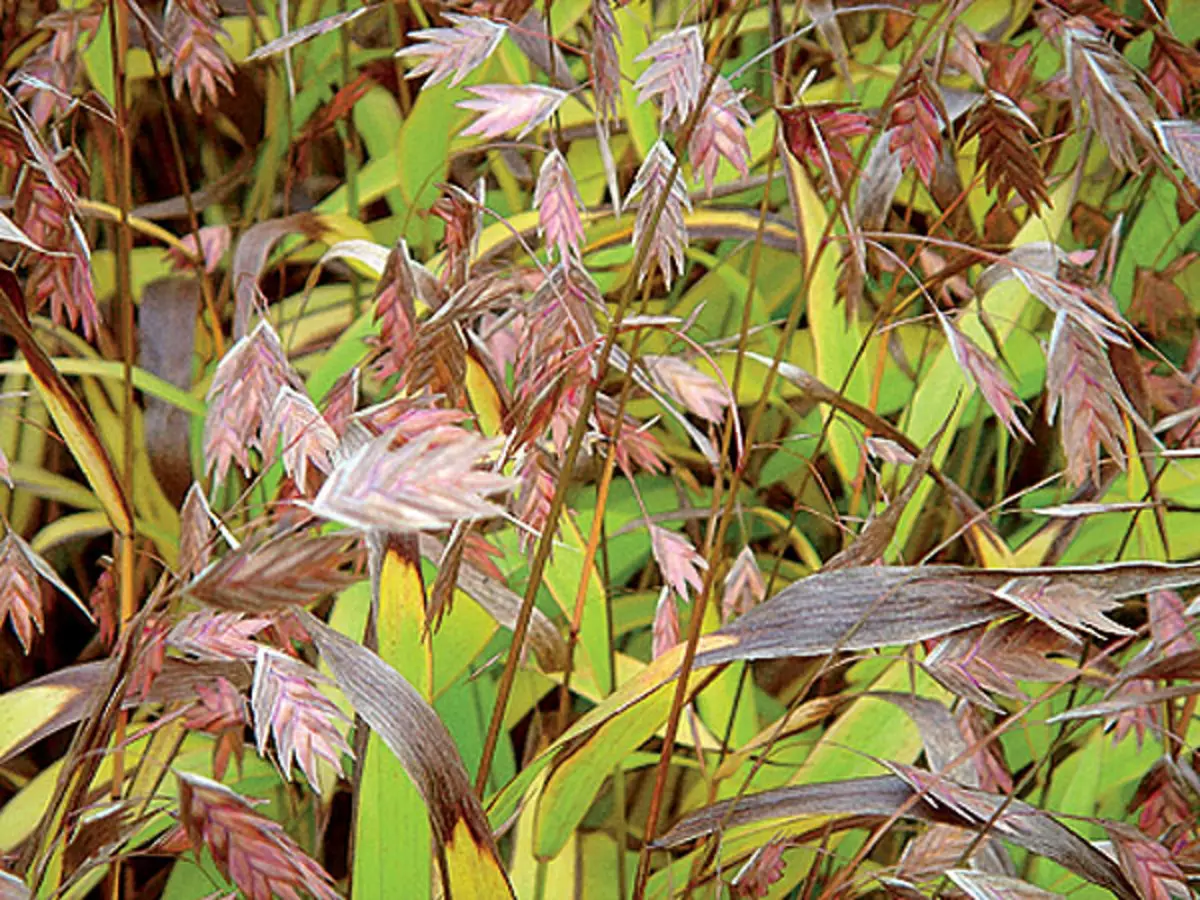
Liberal planes | 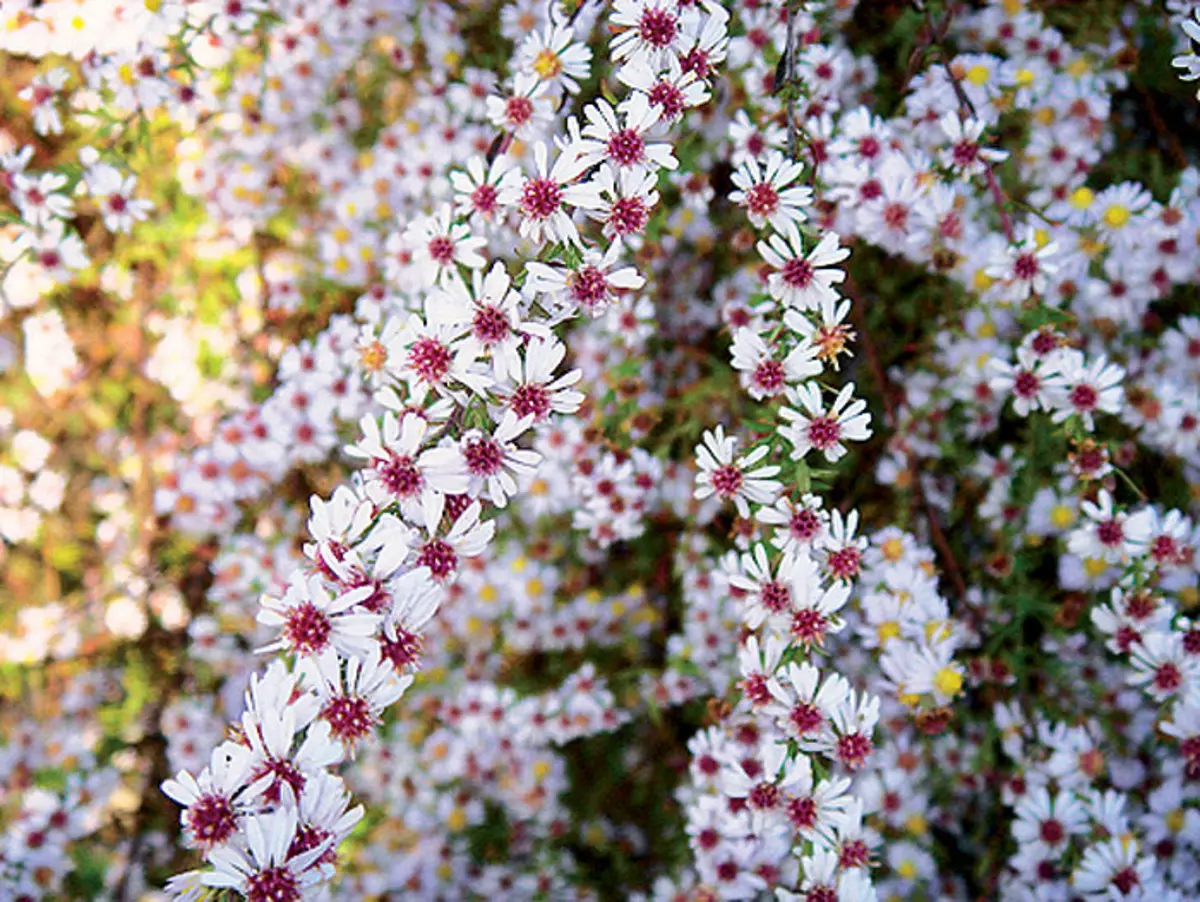
Astra Small Coombe FishaCre | 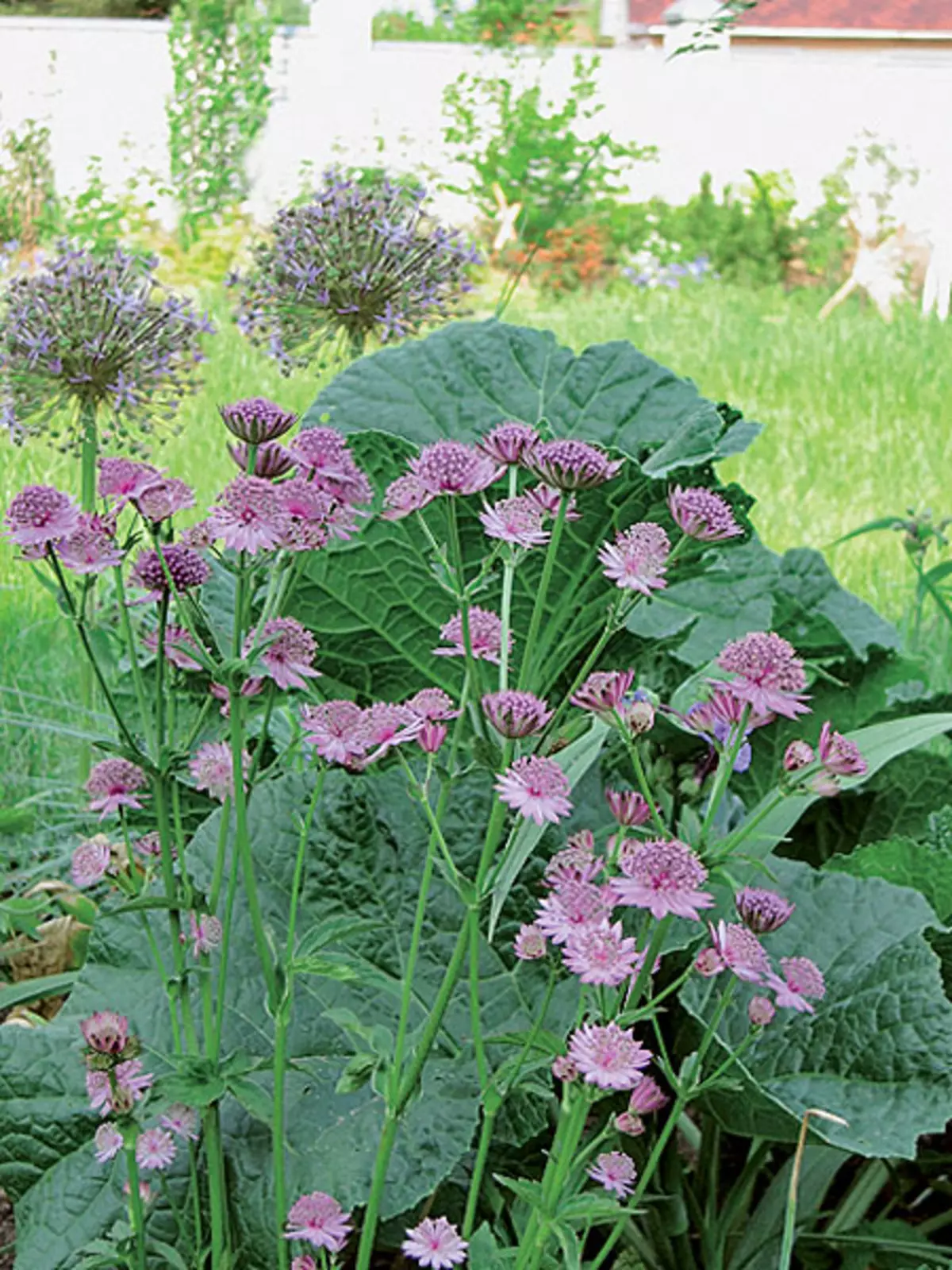
Astrantia Roma. |
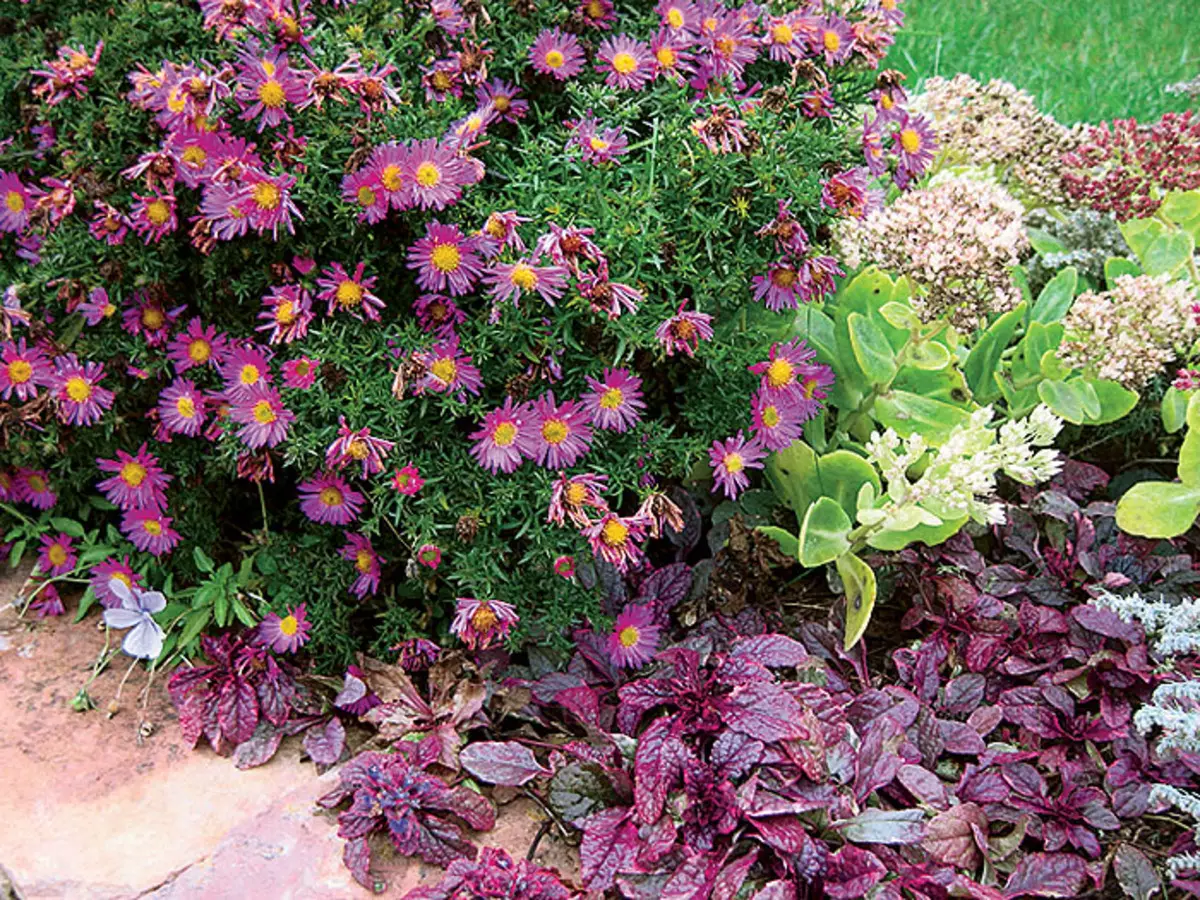
Astra pillowed Kristina. | 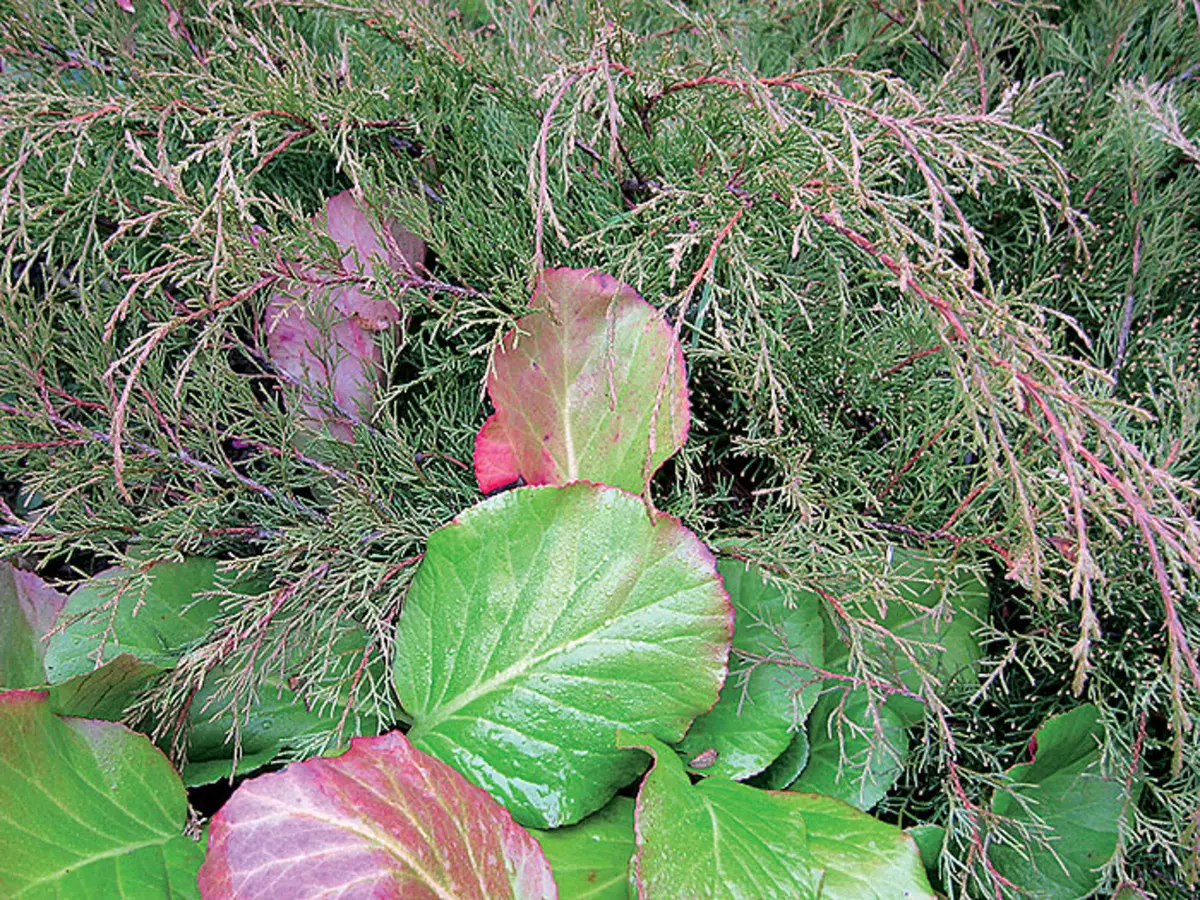
Badan Doll | 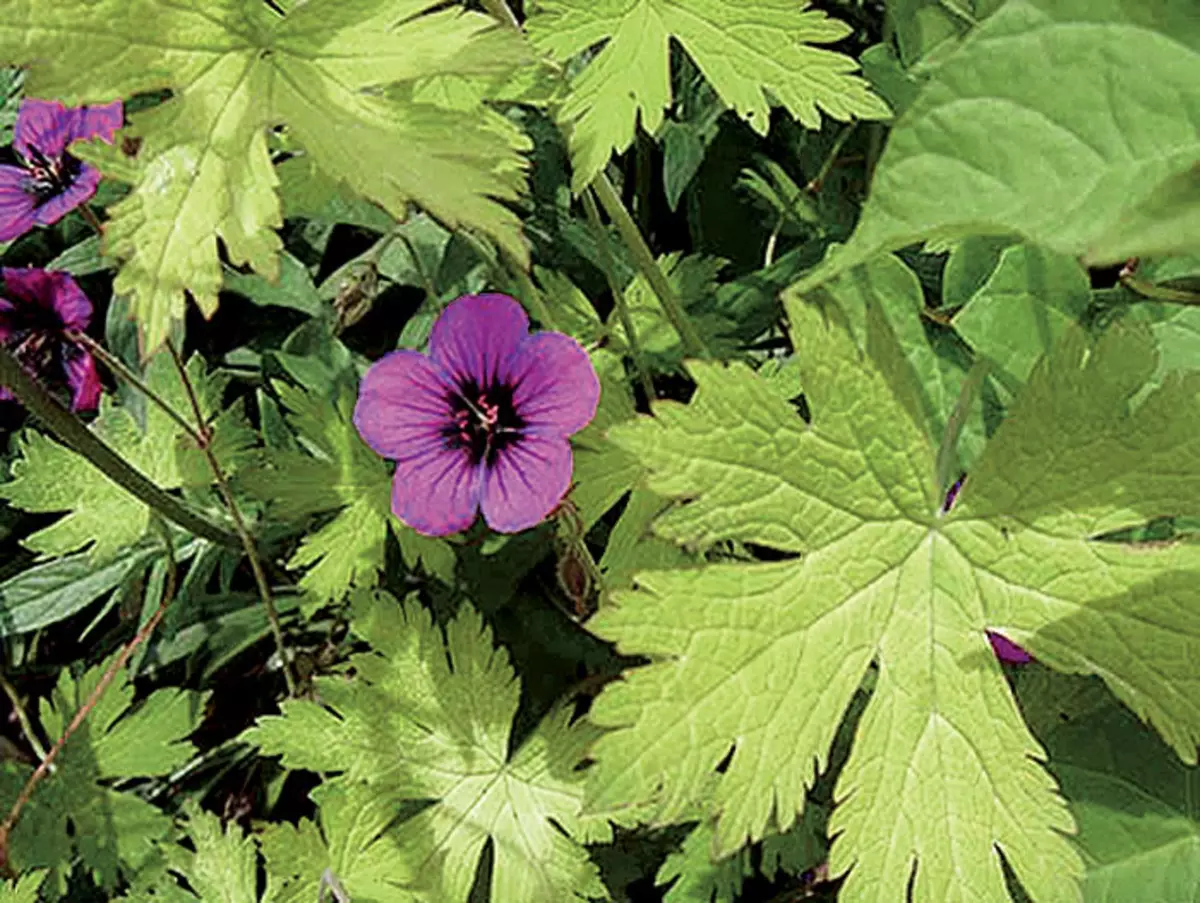
Gerann Ann Folkard |
The author of the ideas and photos of Tatyana Koyesman
The cereal garden is called a "small care" garden, because it does not require trouble-free worries. Just only in the spring cut dry last year's leaves and stalks with spikelets. However, I would like to pay attention to three circumstances. The first ease of care will be ensured only if you plant suitable for your conditions (soil, illumination) and the plants planned by you. Secondly, some cereals (reed ductile, the muscantus sacharocels, spartine combed) very quickly grow up thanks to powerful creeping rhizomes. In relation to the surrounding plants, they behave like aggressors. Therefore, these types of specialists recommend landing into containers, which are then bought into the ground, or limit their growing border stripes from plastic or slate. Fourtem. Only varietal cereals, which multiply the division of the bush are recommended. The species multiplied with insemination, and in a couple of years you will have to spill them on the site as weeds.
Love for warmth
To work in the garden, the most important of all classifications is the division of cereals on "warm" and "cold". "Cold" (or cold-growing, cold-facing, from English Cold Season) - those that live in a moderate climate in natural conditions: the average daily temperature from 12-15 C is comfortable (or Japanese grass), boron messenger, canary , Vaintik is a shrouded, schuchka idre. They are waking up early in the middle of Russia in early spring, grow rapidly and in the middle of summer are already decorative. Jarciemen growth of these herbs is suspended, but with the onset of autumn usually continues again - before the arrival of the cold."Warm" (heat-insulating, heat-season) cereals in spring and even in June in our latitudes are not visible - they are awakened in the second half of summer, waiting when the average daily temperature will rise to 22-25 C. These are plants of tropical and subtropical zones: Missantus, impert ( Bright red grace, in the suburbs winter is not very good), millet (one of the herbs growing by the "bumps"), praying. The phenomena "warm" cereals are well combined with a variety of bulbous cultures. In early spring, you can admire how the tulips, daffodils, chioneoxes are wanted against the background of the straw muscantus. When the bulby is gaining momentum and start blossom, the stems of the cerebral cut off. AB July to solo again will again become Miscantus, its fresh shoots and then the sultans flowers.
Sun.
As in any plants family, among cereals there are different types: Some need the sun, others prefer shadow; Some grow well on wet soils, others- on dry. Thus, on solar sites with low-grade soils, residents of steppes and southern mountains, oatmeal and oatmeal are recommended tooling soils. On a sunny loam-monkantus, plane spray, millet, praying, spartine. Herbs suitable for half and fertile soils - Diescock, Melika, Lizukh, Schodopogon, Honechloe. The marsh plant, mannica, canary- need wet, rich in humus soil. Canary, like some other cereals, sometimes fear to plant out due to the fact that it quickly spreads, displacing neighboring plants. But there are both non-aggressive grooves of the canary: Picta, LuteOpicta. The same they are compact and lower than the rest.
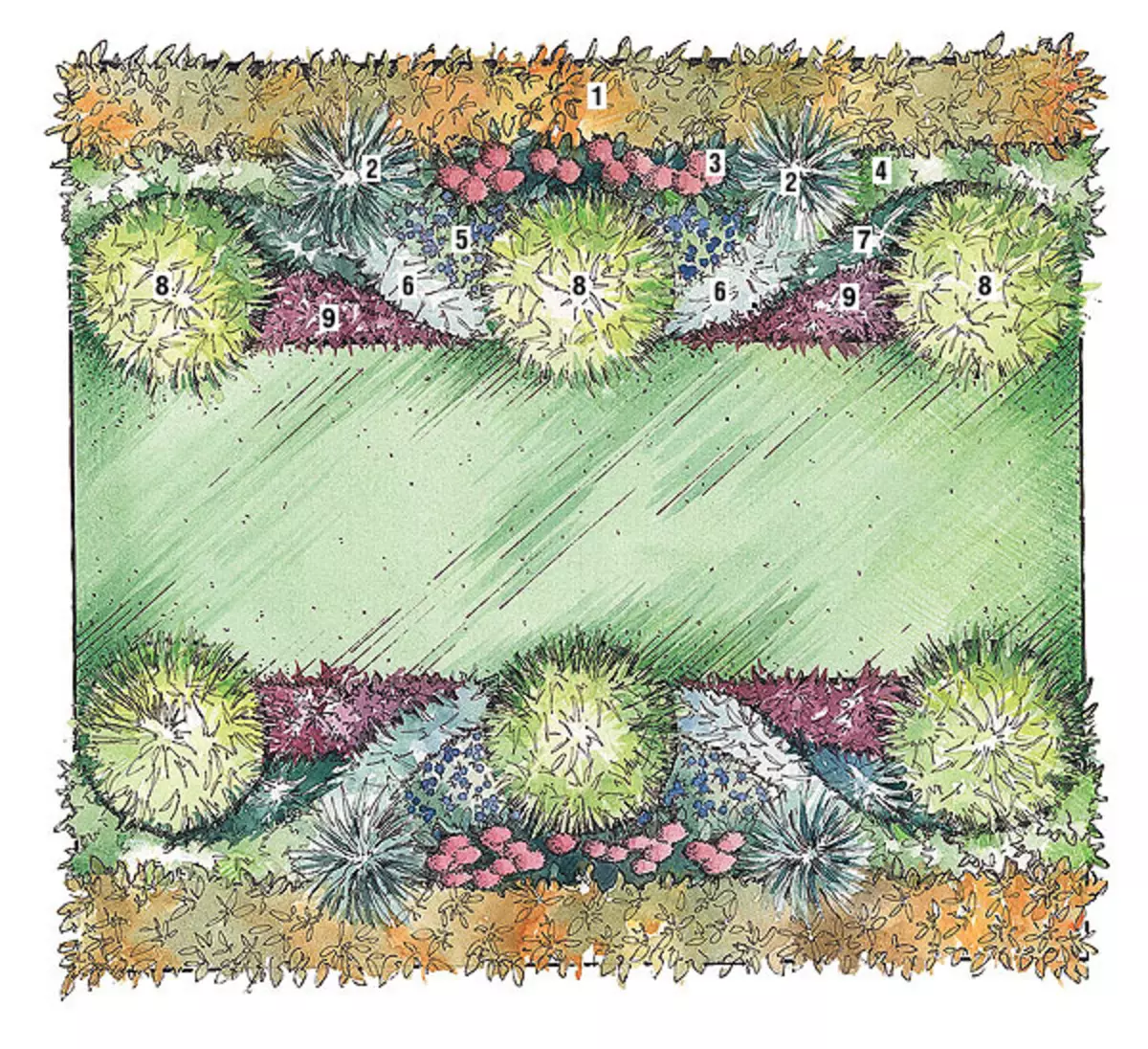
Demanding in a regular flower bed serves as a framed for herbal path. The Japanese Grass Honelet, its most interesting variety-aureola soloits here.
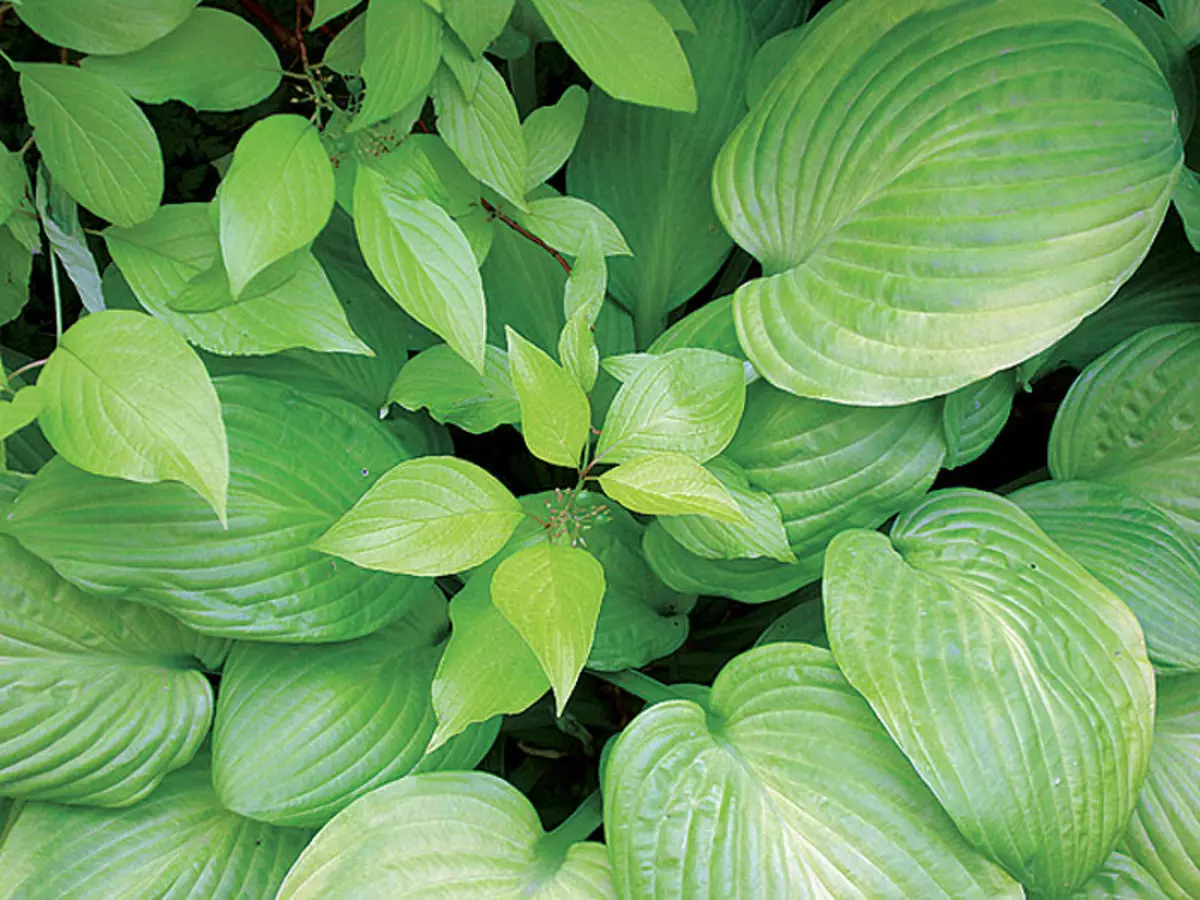
Deren aurea. | 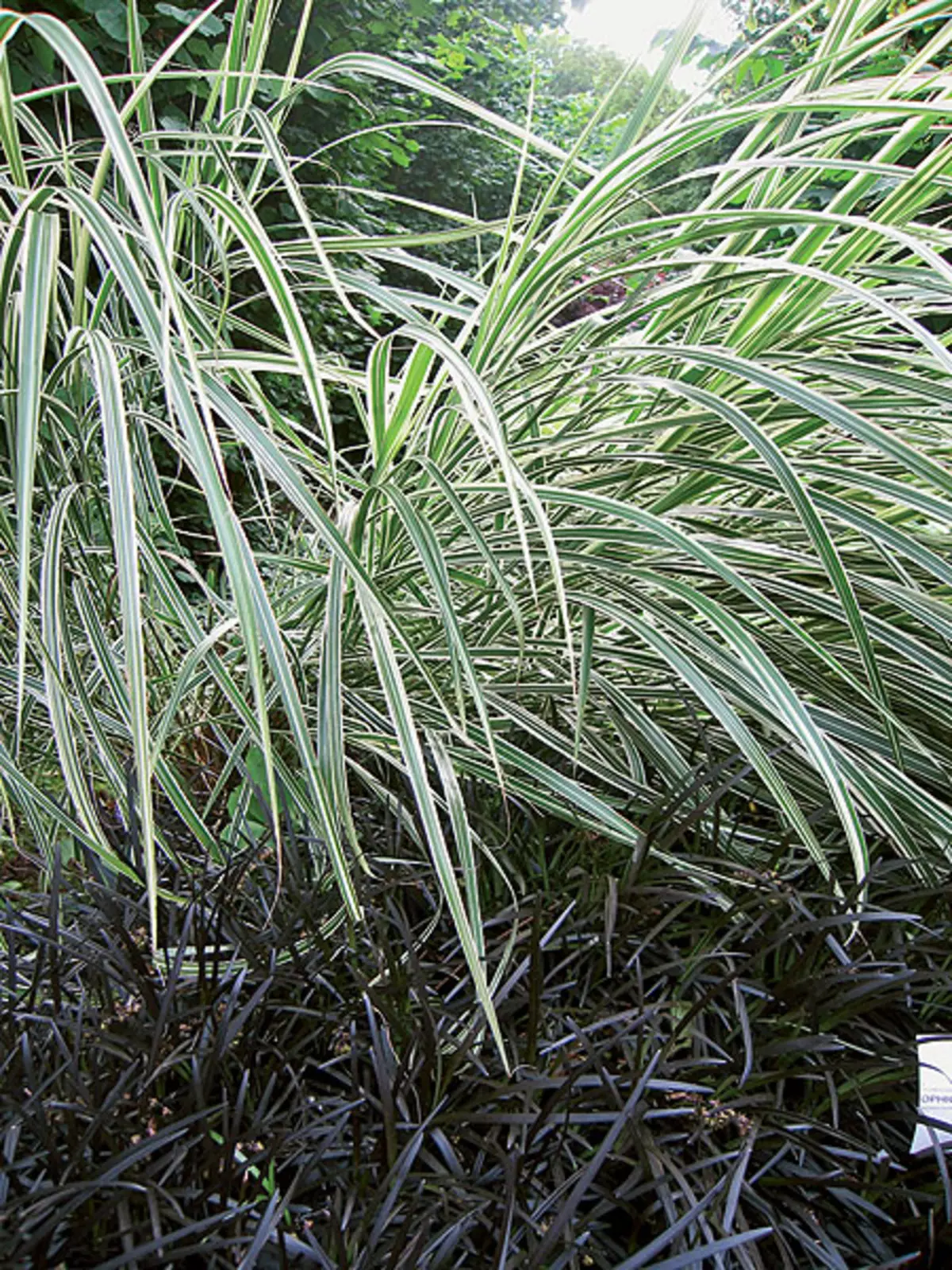
Miscantus Variegatus. | 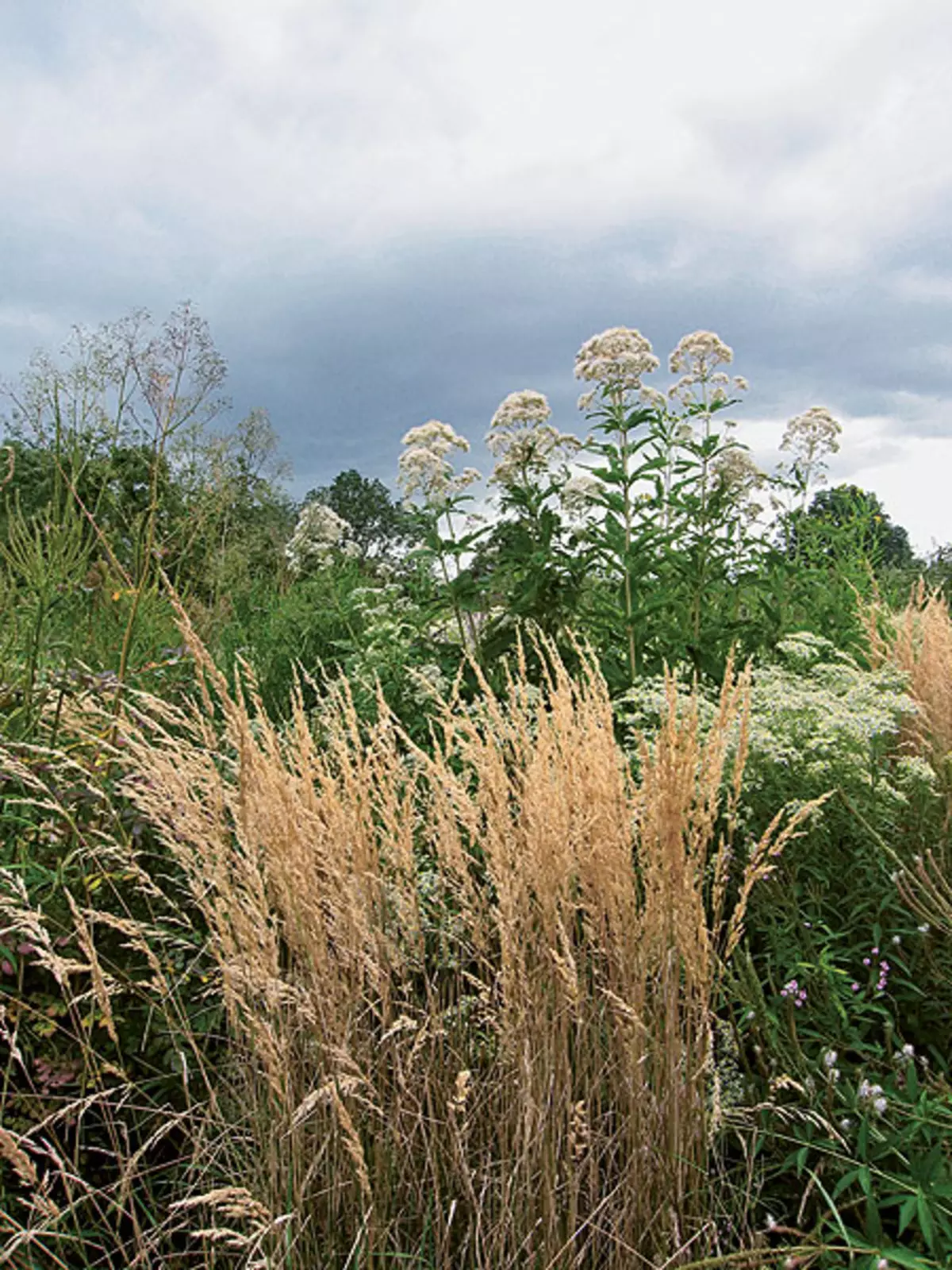
Spotted Spotted Album |
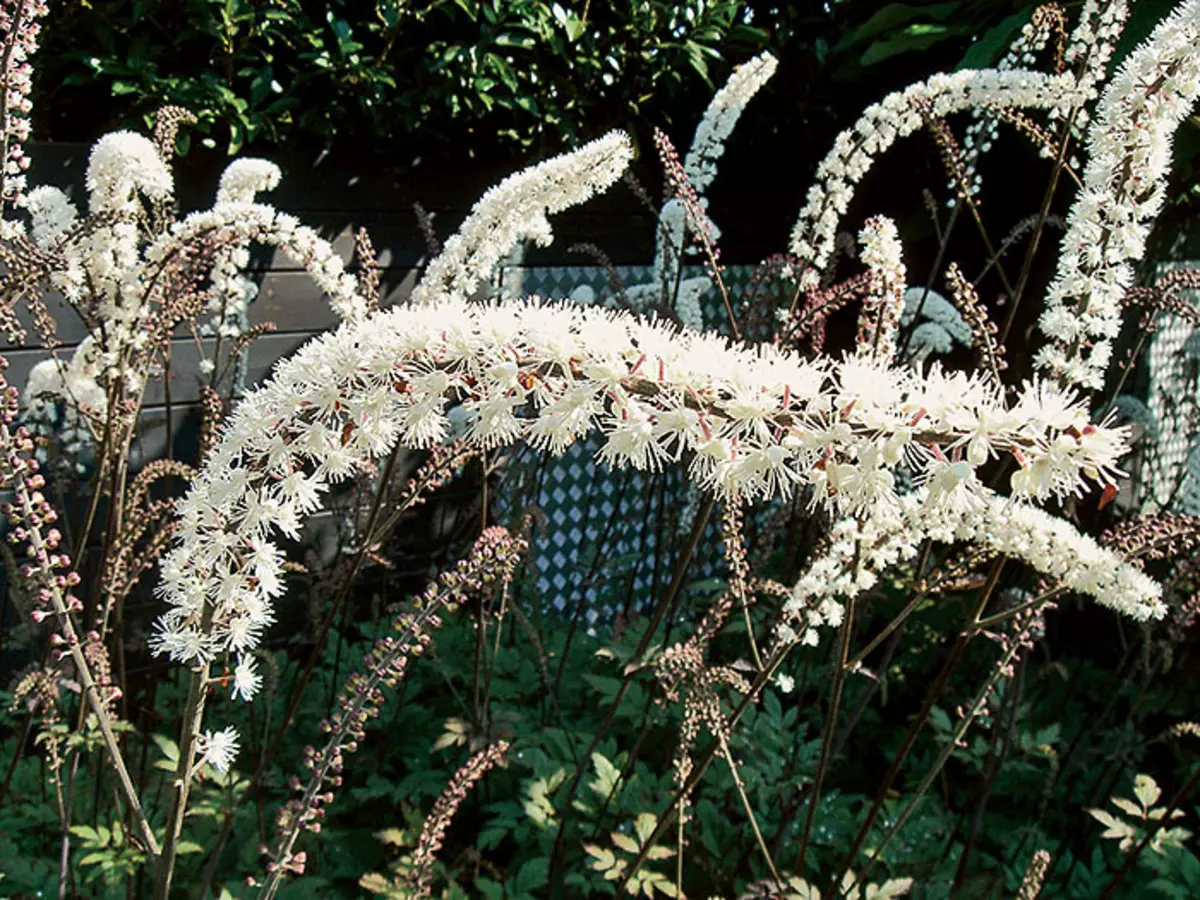
Klopogon WHITE PEARL. | 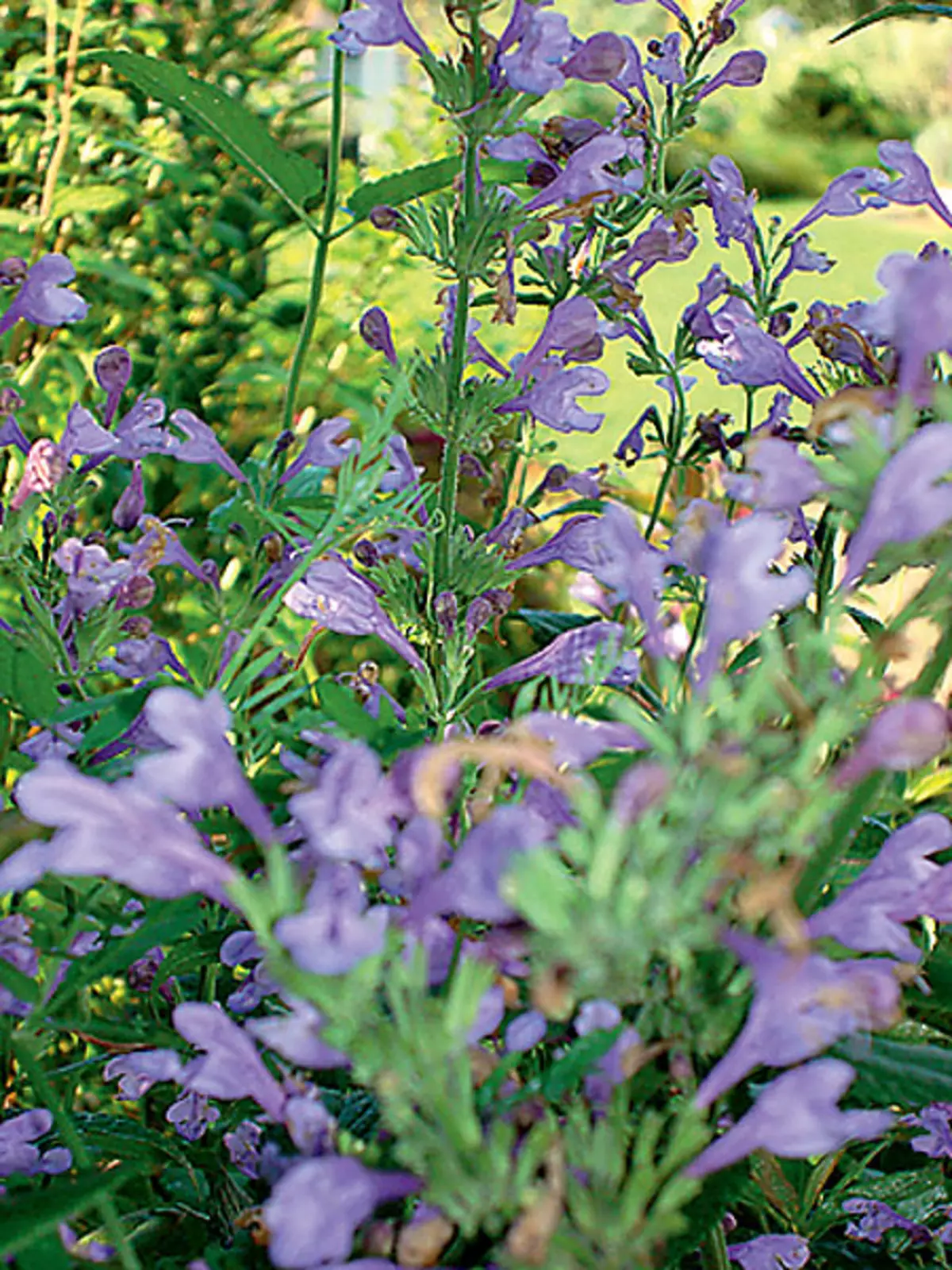
Kotovnik Siberian | 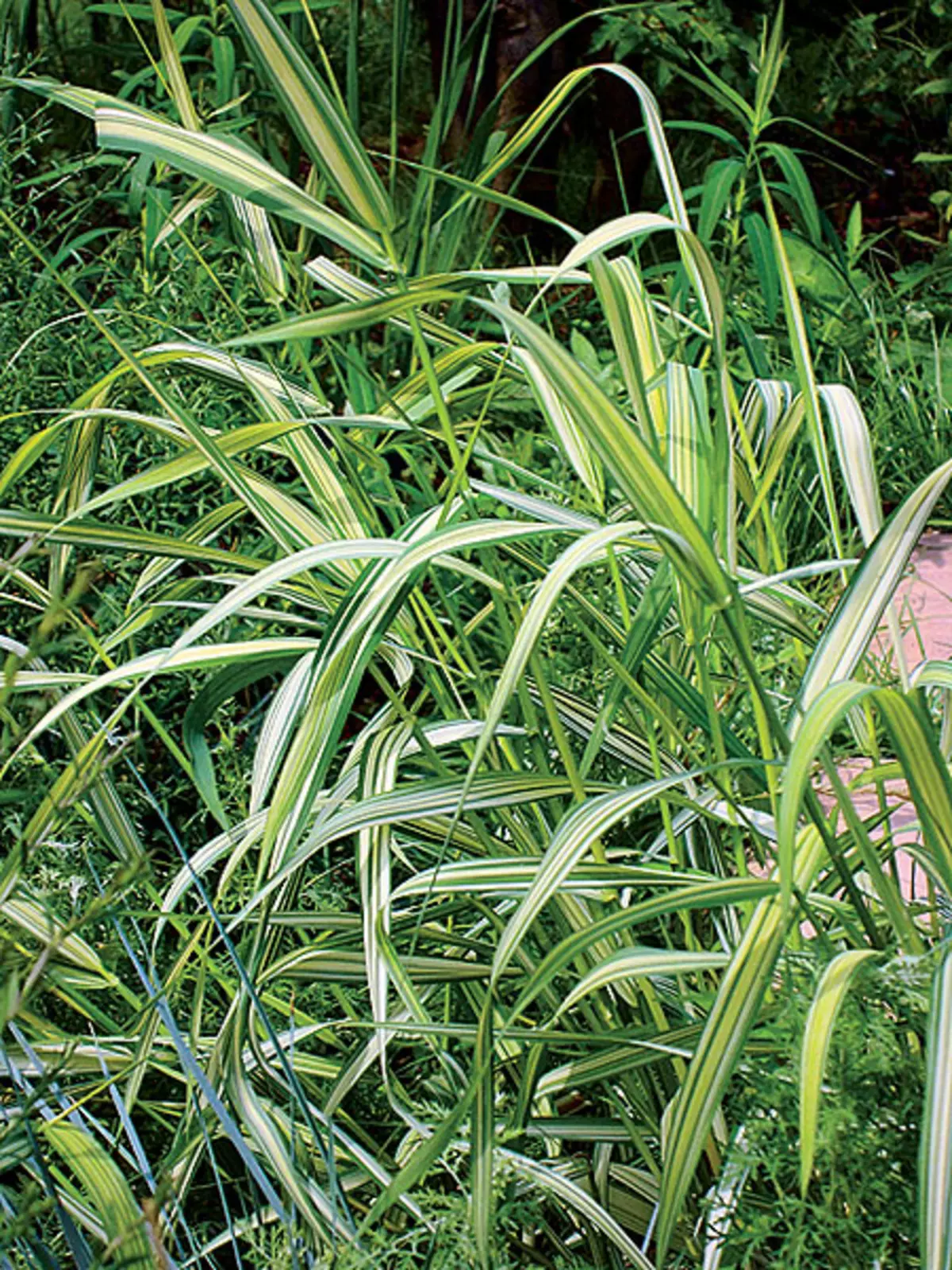
FALARIS LUTEOPICTA. |
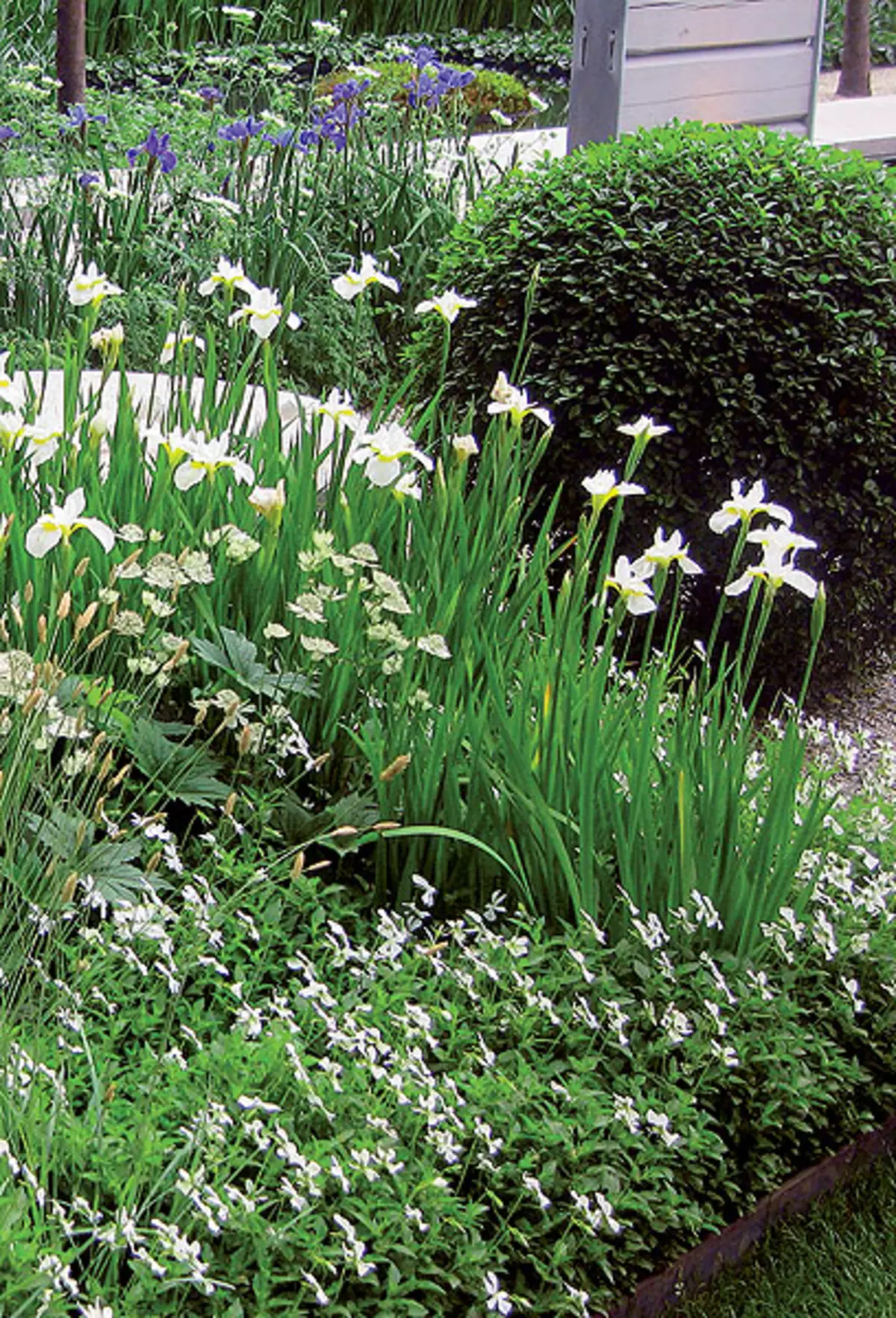
Iris Siberian Alba. | 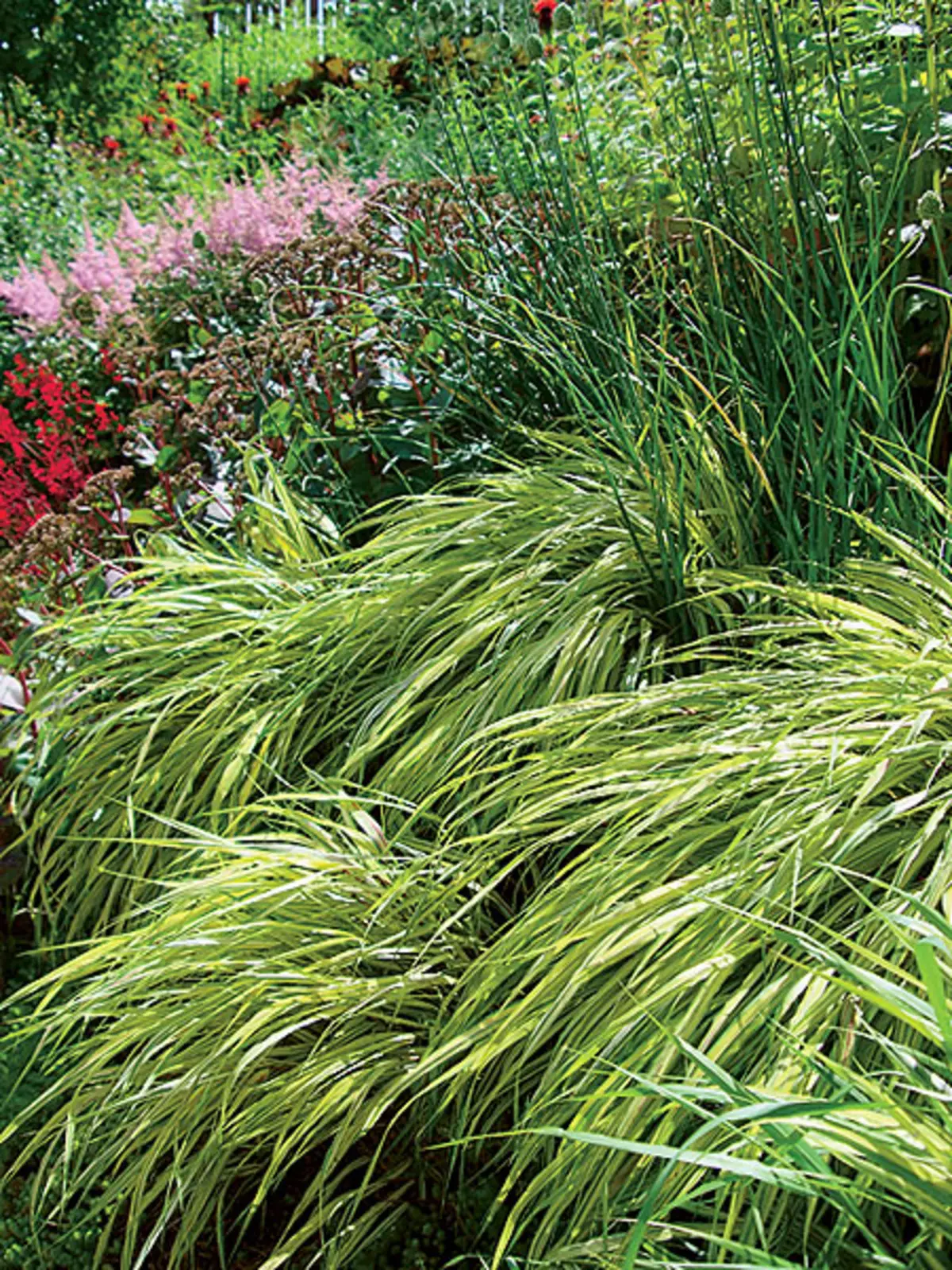
Honeola Honeola. | 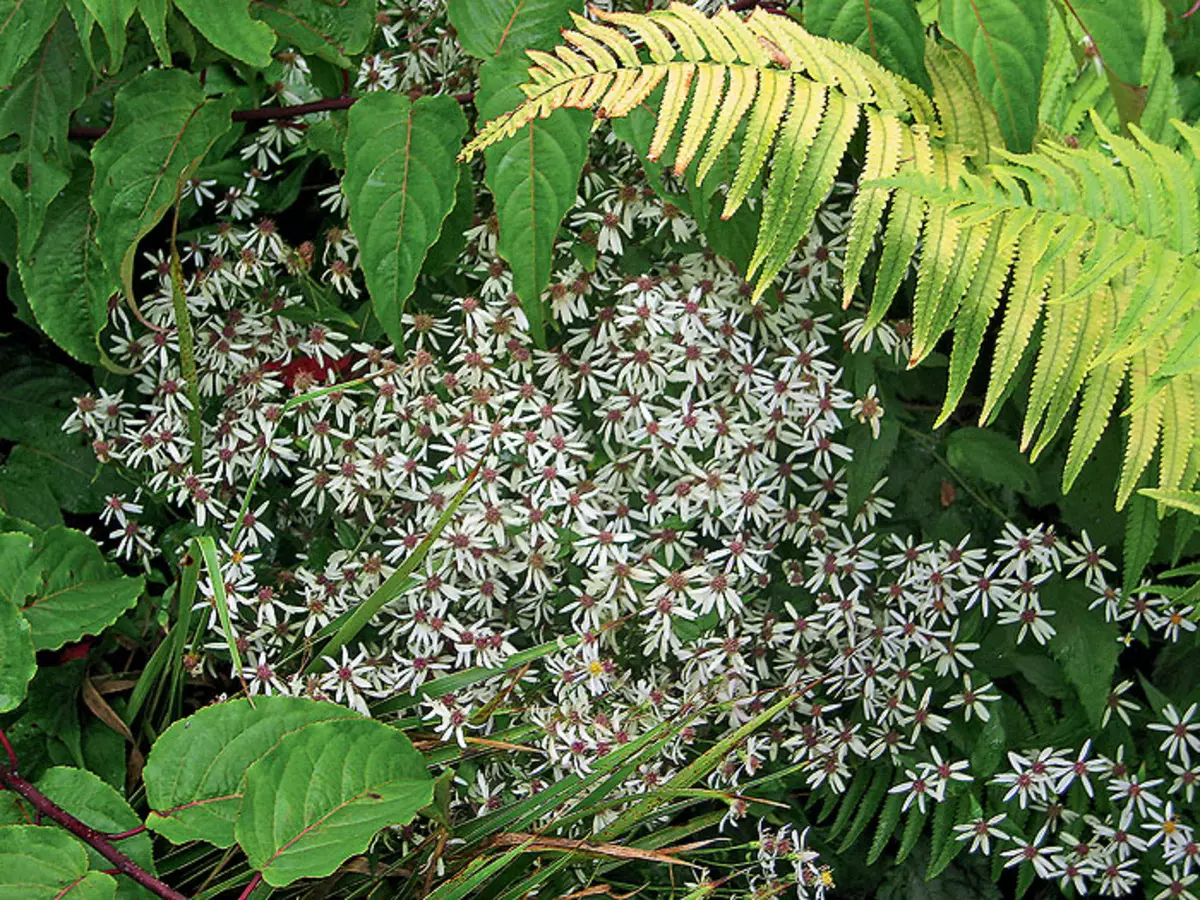
Astra estuary |
The author of the ideas and photos of Tatyana Koyesman
Ensemble or solo?
Children of wild steppes and meadows, cereals give the garden corresponding to the nature of naturalness, immediacy, slightly negligent chaoticness. Therefore, they are traditionally included in landscape flower beds, however, use and when creating regular compositions, skillfully using rigidity or, on the contrary, the softness of the "bush" form. To introduce one or another species in the garden design, it is necessary to imagine what it will be during the period of maximum decorativeness is its height, color, ear. Some cereals look more advantageous against the background of a dense wall of plants or fence. Let's say, praying, which in the fall is painted in a bright yellow color, well "read" on a green or bright red background (landing of the hawthorn, IRGI). Other herbs need to watch "on the lumen" - for example, the essay is hung PENDULA. In a word, each plant looks effectively in its place.
Opinion of a specialist
The best cereals look in the gardens, where there is a so-called "open border" - imitation steppe or meadow. Pick plants depending on lighting, soil. It can be done, for example, a mix of checkered, onions and astrants, issuing this landing as a round flower garden with a diameter of about 1-3m. Fashion trend in modern flower beds, high plants, "popping" from the mass of lower. In the vregular landscape, the monoposodts of cereals look good: moline, pinch, Elimus. The latter, by the way, is almost in any garden, and completely in vain, many are trying to get rid of him, referring to aggressiveness. ELIMUS must be limited to border ribbon. Aesley settle it against the background of the chopper with grapes, Maiden, such landings will look very pretty. Interesting collision of cutting forms and cereals. The waterproof zone, on the background of strict hedges of ate, hawthorn or bubbler, to plant "architectural" plants well: high grade of Molini (Transparent, Sky Racer), Miscantus (Florida, Giant) - their height is sometimes reaches 3m.
Tatyana Koisman, Landscaping Architect, Director of Gertrud Garden Art Center
Millet is recommended to combine with glossy foliage (let's say, host, badanov) either with plants changing color during the season (peony, pelthylum, buzital). After all, millet also changes: it is green in the spring, then it becomes golden, cherry-red or blue (Claude Ninc grade). Such a composition for the season will be transformed several times, why the guests and the owners will have the impression that every time they fall into a new garden.
The pike is not bad to combine with roses, onions. It is good both in the regular garden and in the landscaped, besides decorative at any time of the year. In the spring, it is bright green bumps, by June- July begins to grow, then blooms, forming a golden haze, and stands all winter.
High varieties of Miscantus and Praying are harmoniously combined with high grassy perennials (helixantuses, asters, gel'eniums, veronicasters, high mountains, clopogones). The color of them in thick landings does not matter, everything merges, creating "colorful shock". Interesting compositions with the inclusion of shrubs: for example, a Diabolo fruit bubble combined with bright Astra and Miscantus Goldfeder. Herbs can be decorated with stairs - both front and "forest", drowning in greenery. Next to the steps of the front staircase in the sun are good oats of a PENDULA-gray grace with a height of about 1.5m, leaning towards the ground.
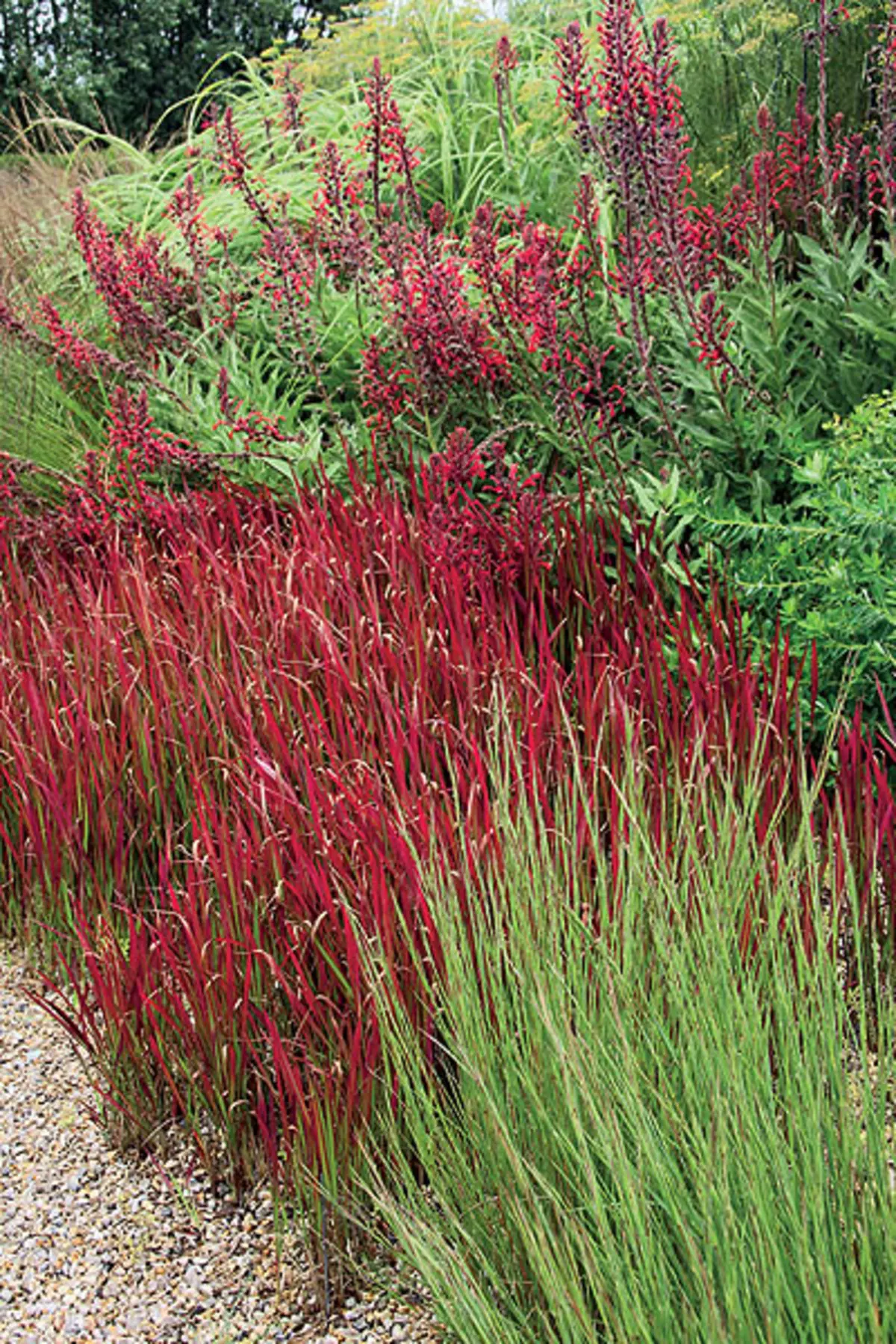
| 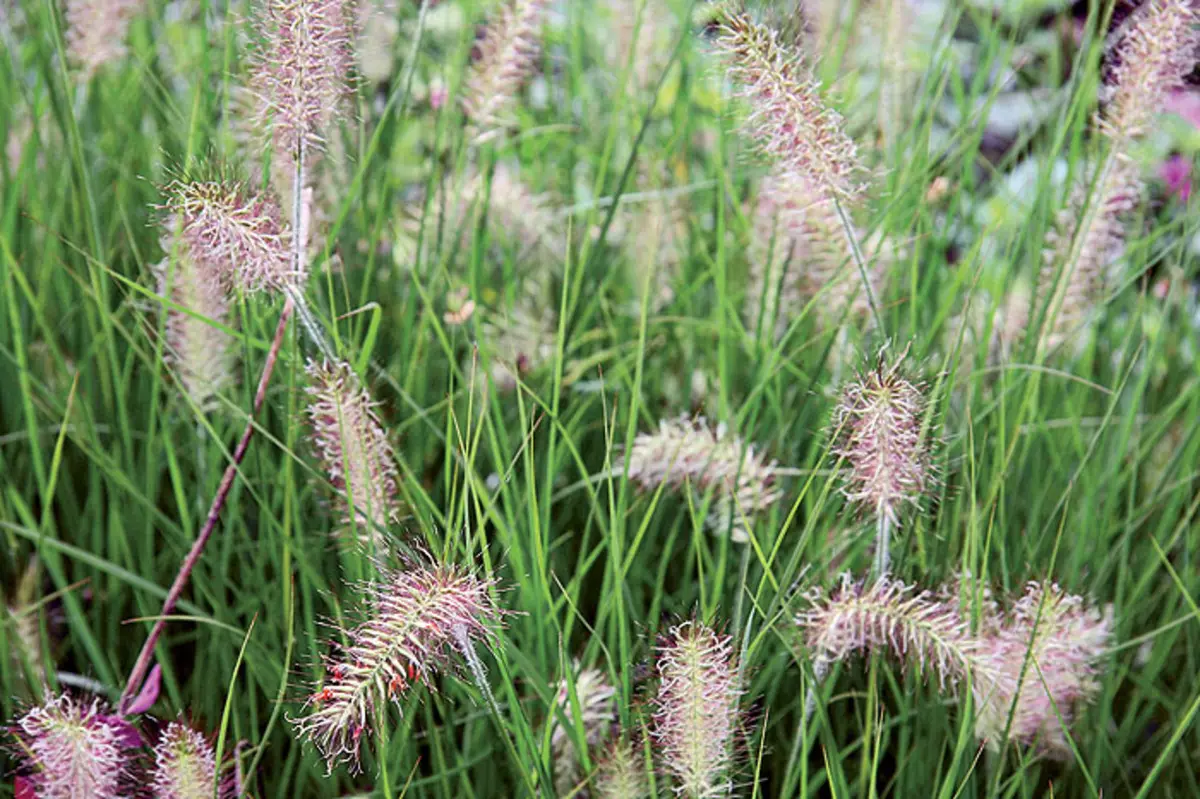
| 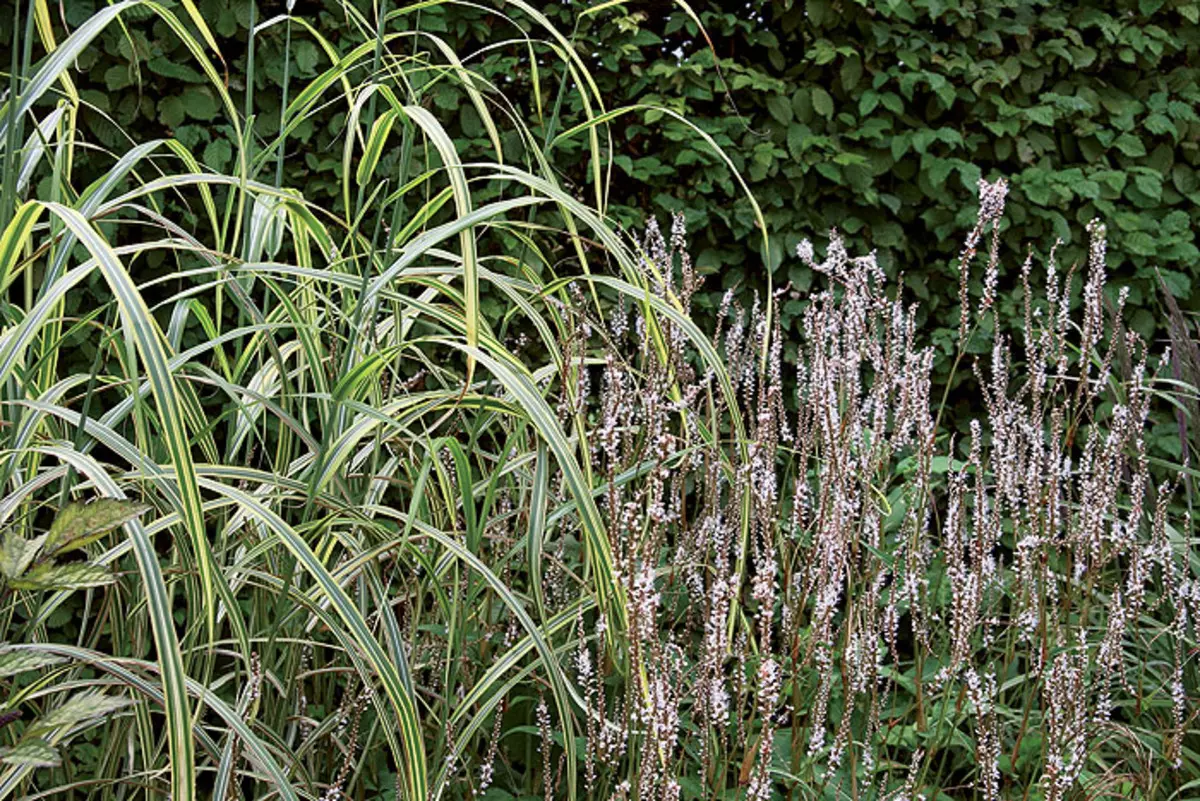
| 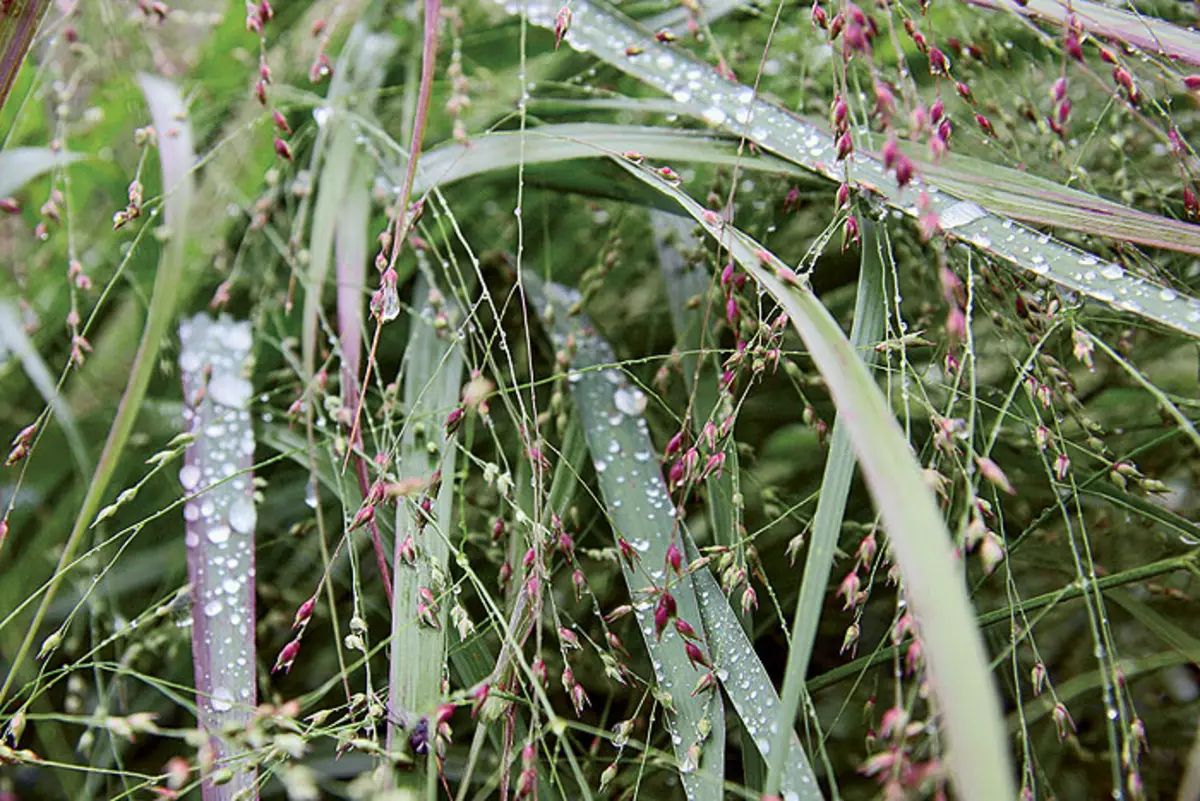
|
1-5. The beauty of grass-silent, non-crying. IU of each type and variety it is individual: the impert is attractive with red arrows (1), peristhestic-fluffy spikelets (2), muscantus striped leaves and large panicles (3), as defective inflorescences, as if collected from individual "droplets" (4 ). Oatman looks like a blue ball (5), it looks good both in monoposodes and in compositions
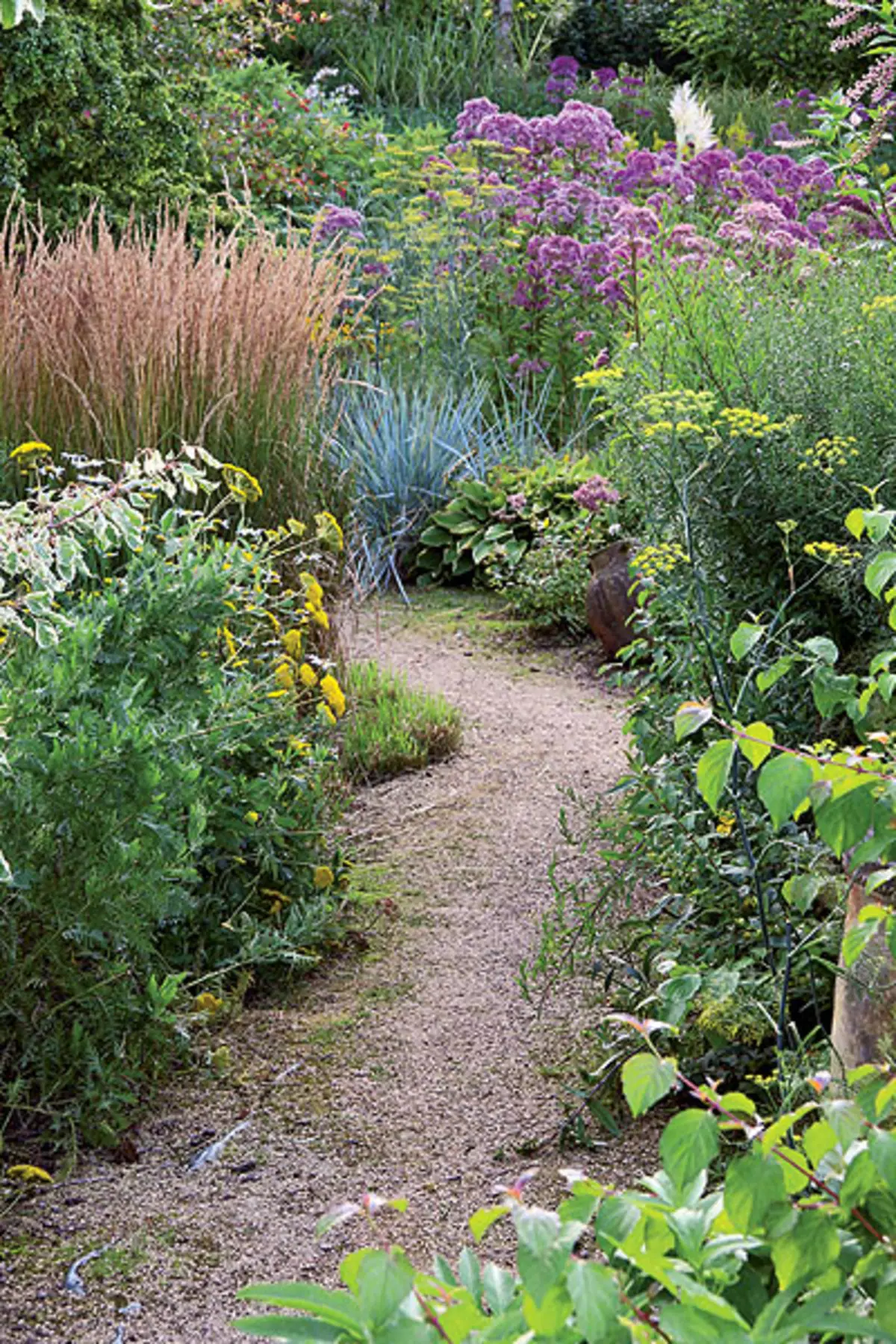
| 
| 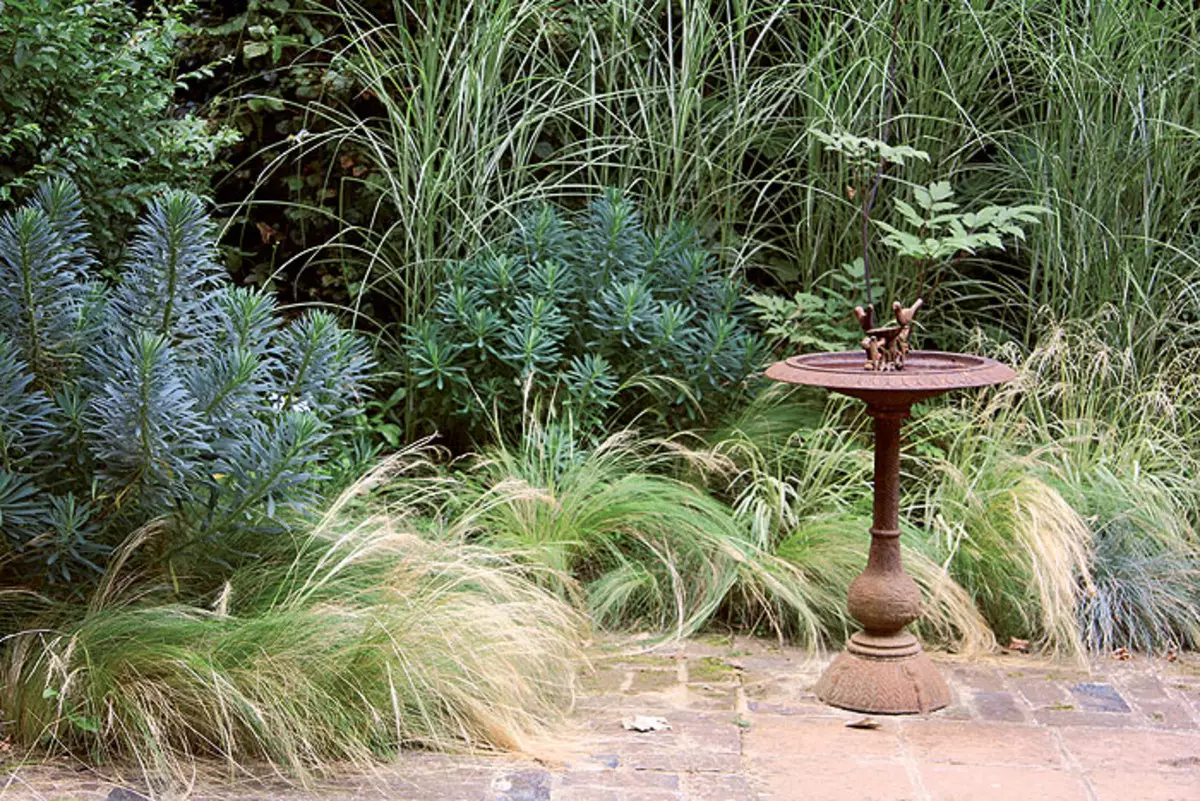
| 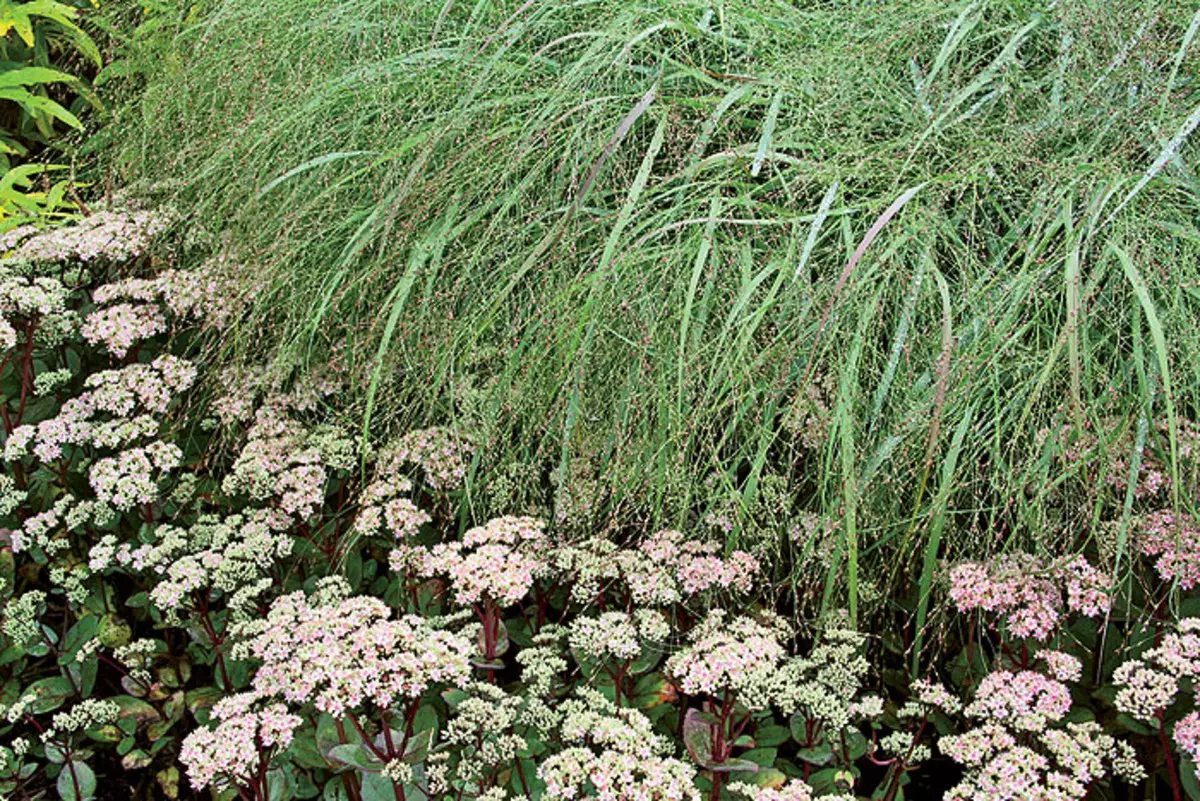
|
6. The ability of Miscantus to build a large mass is used to create vegetable shirm.
7, 10. The elegant population with the finest hair-hair leaves in the middle lane of Russia winter is bad. However, it can be grown in containers, and for the winter to put into the cool room.
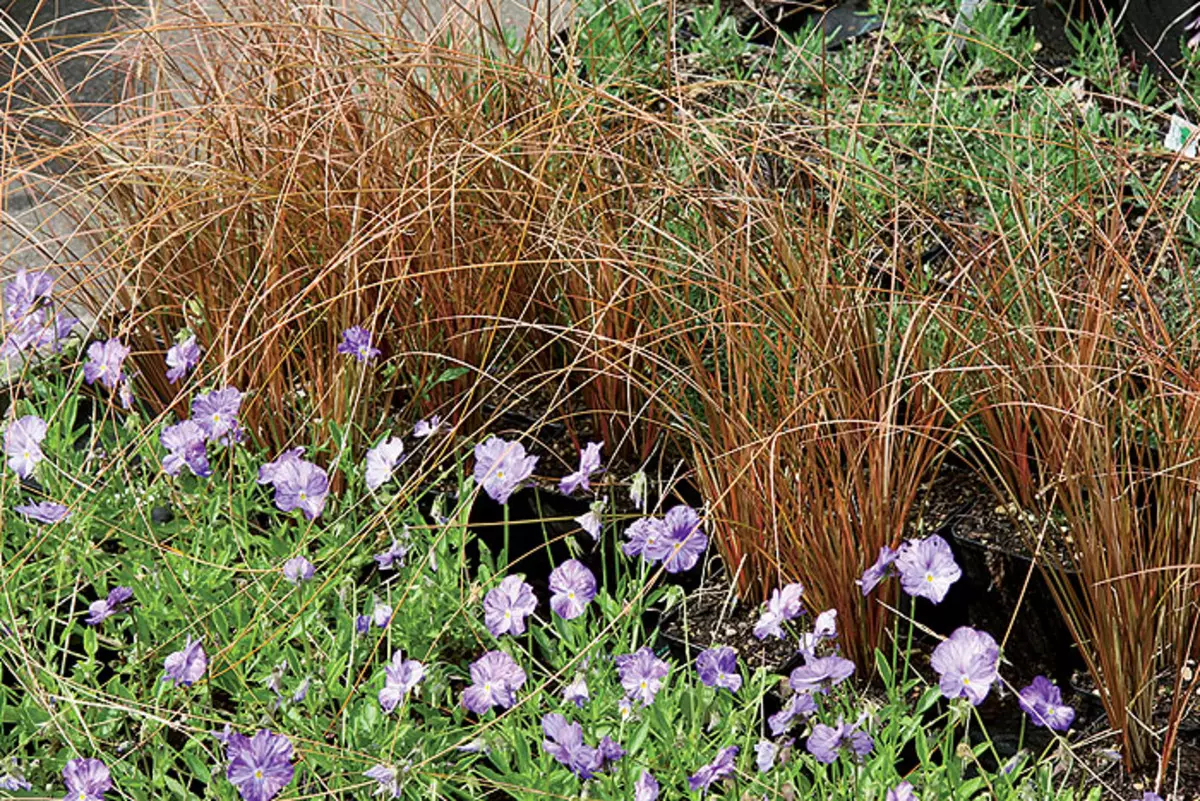
| 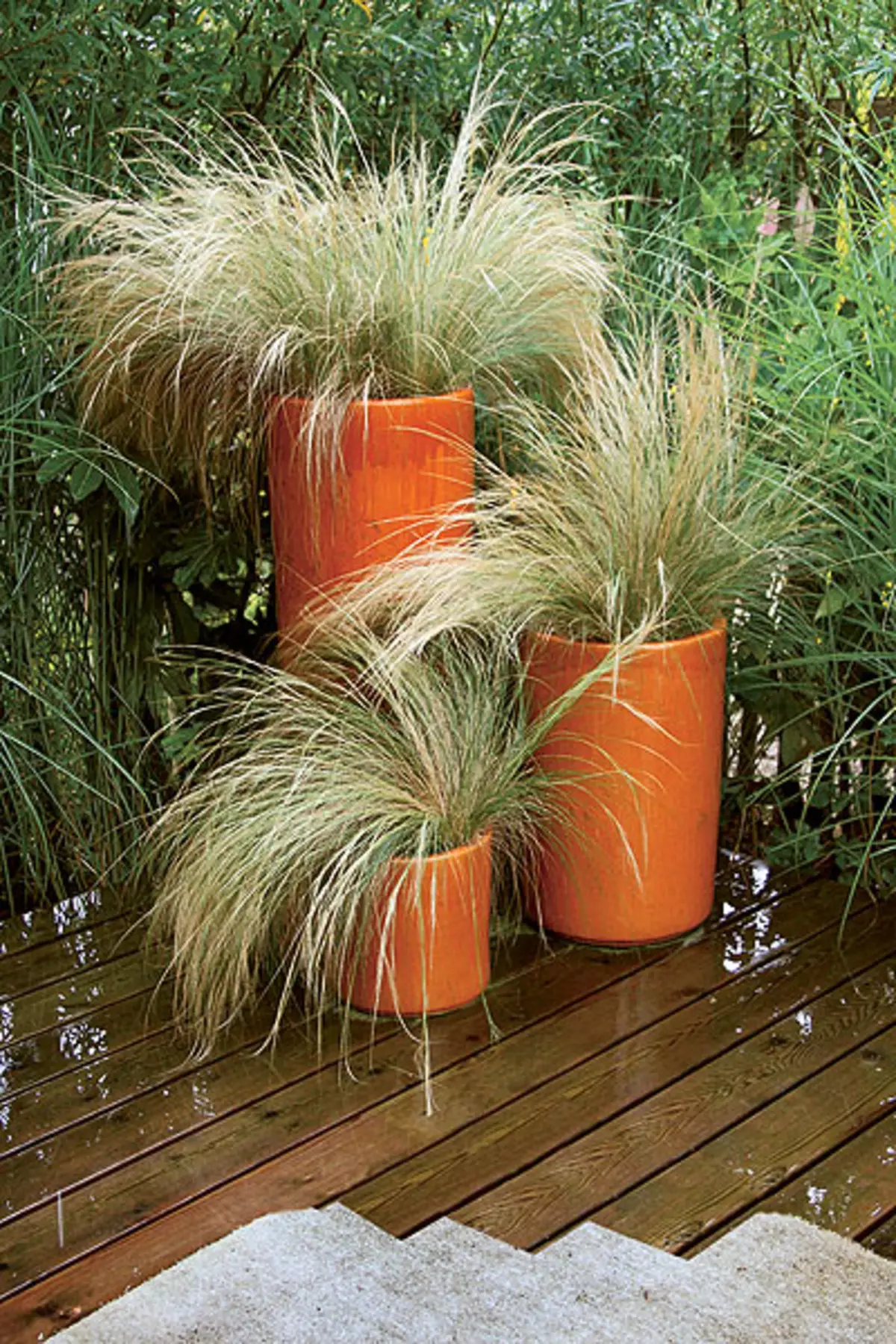
| 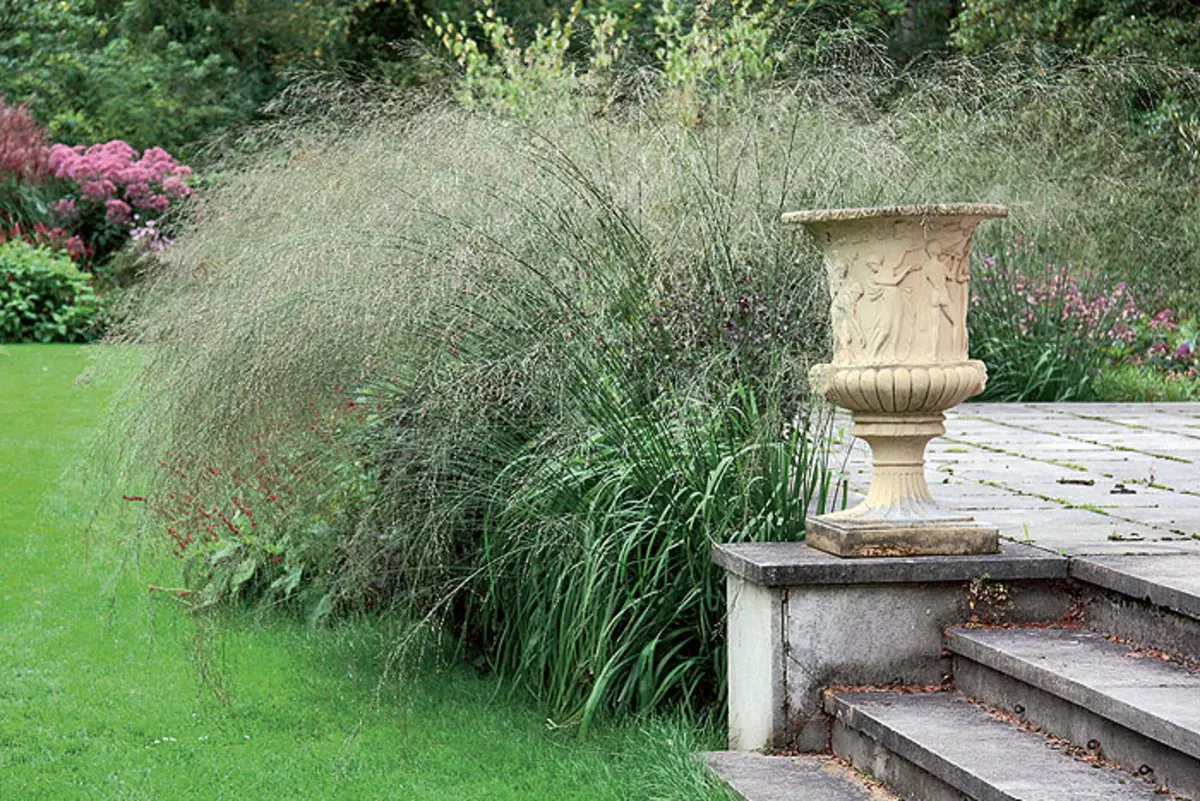
| 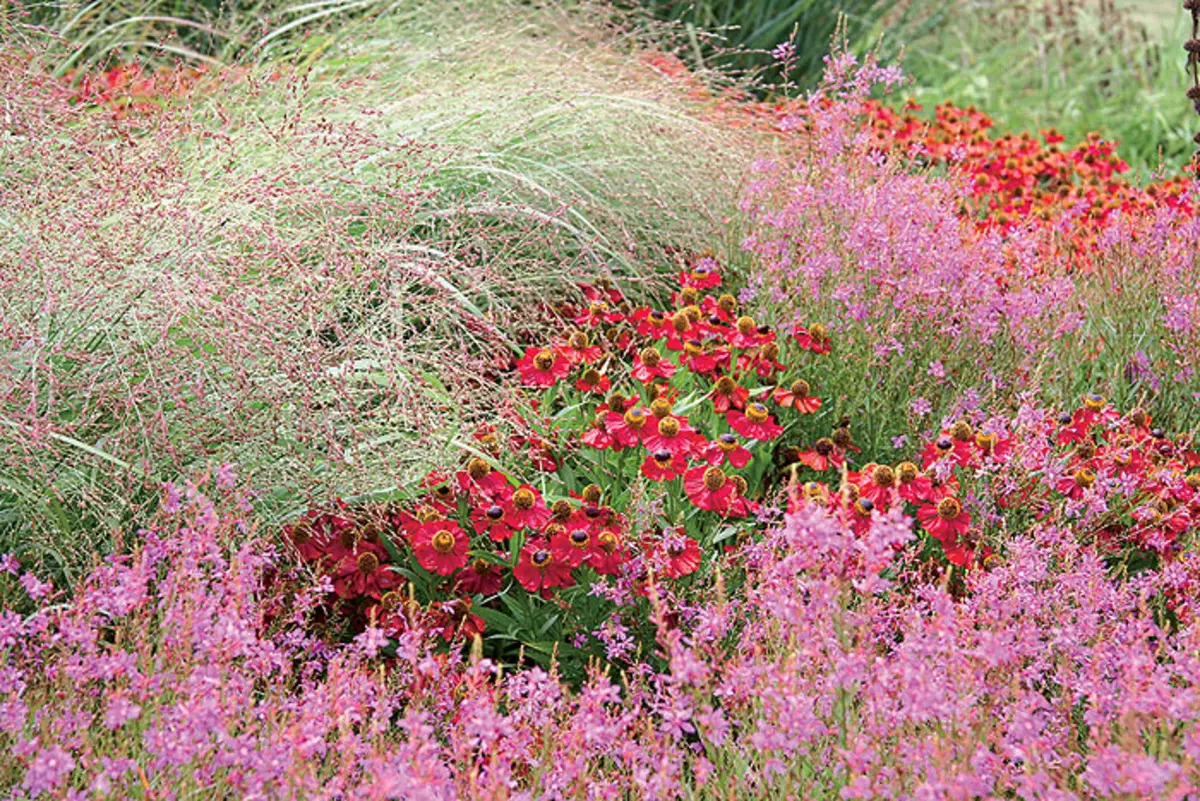
|
8, 9, 12-14. The cereals and perennials are connected in the composition according to the principle of contrast - color, texture.
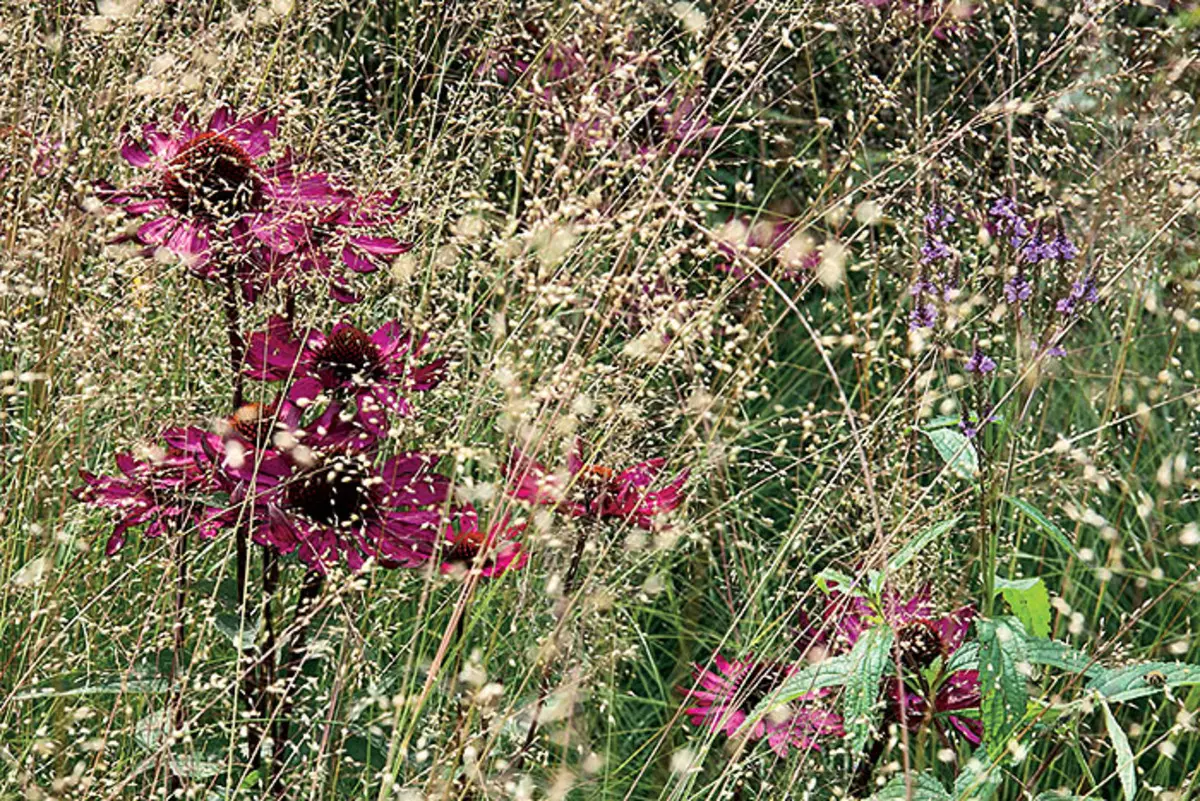
| 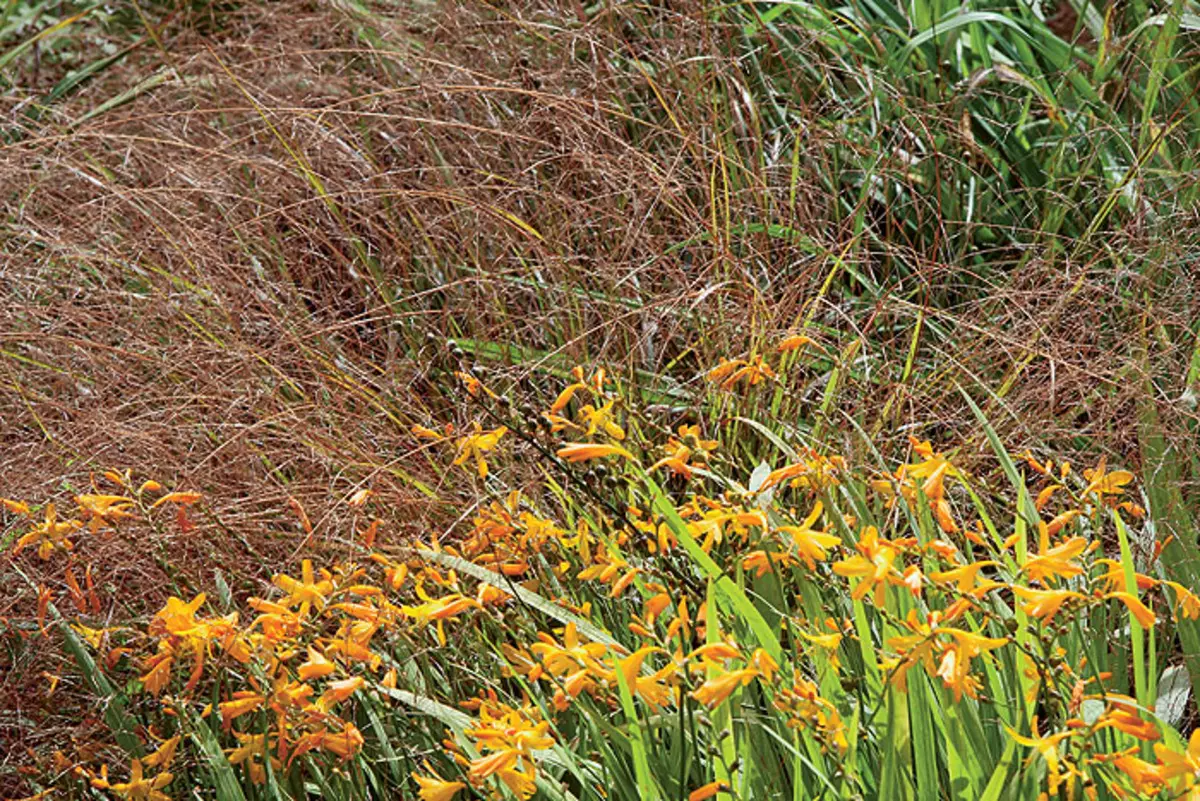
| 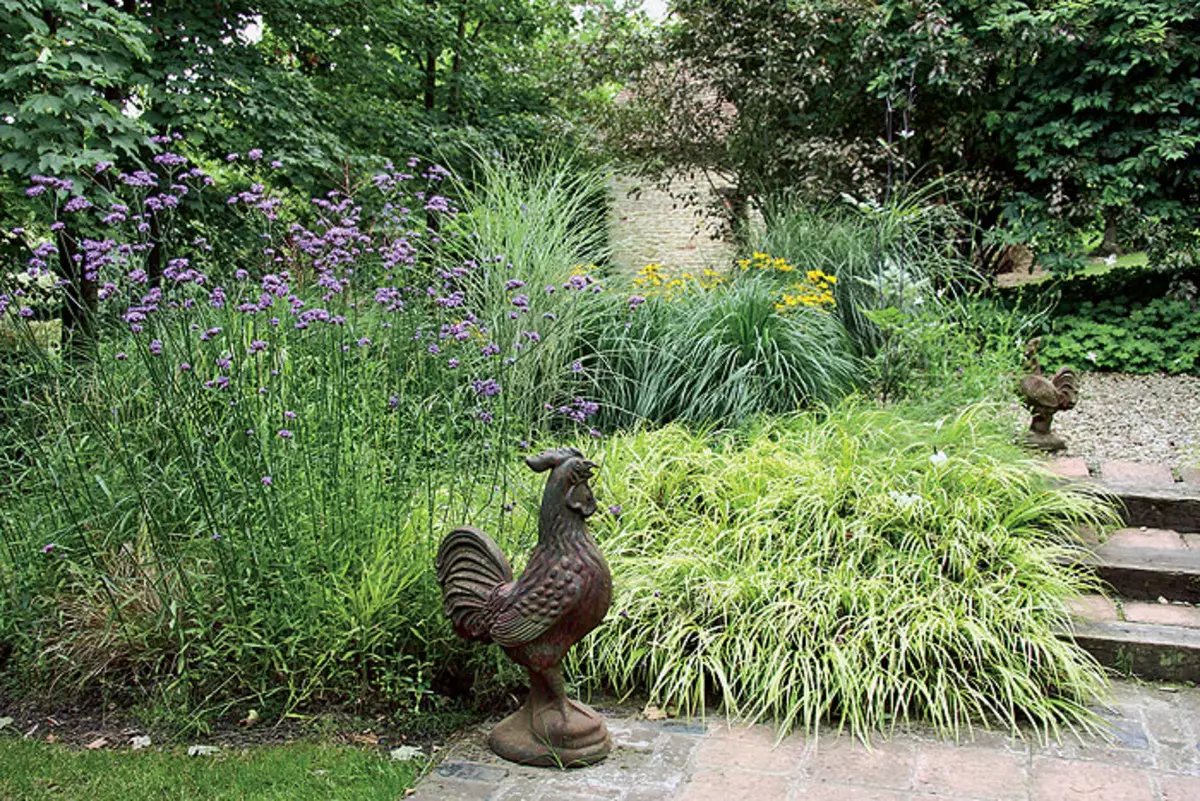
| 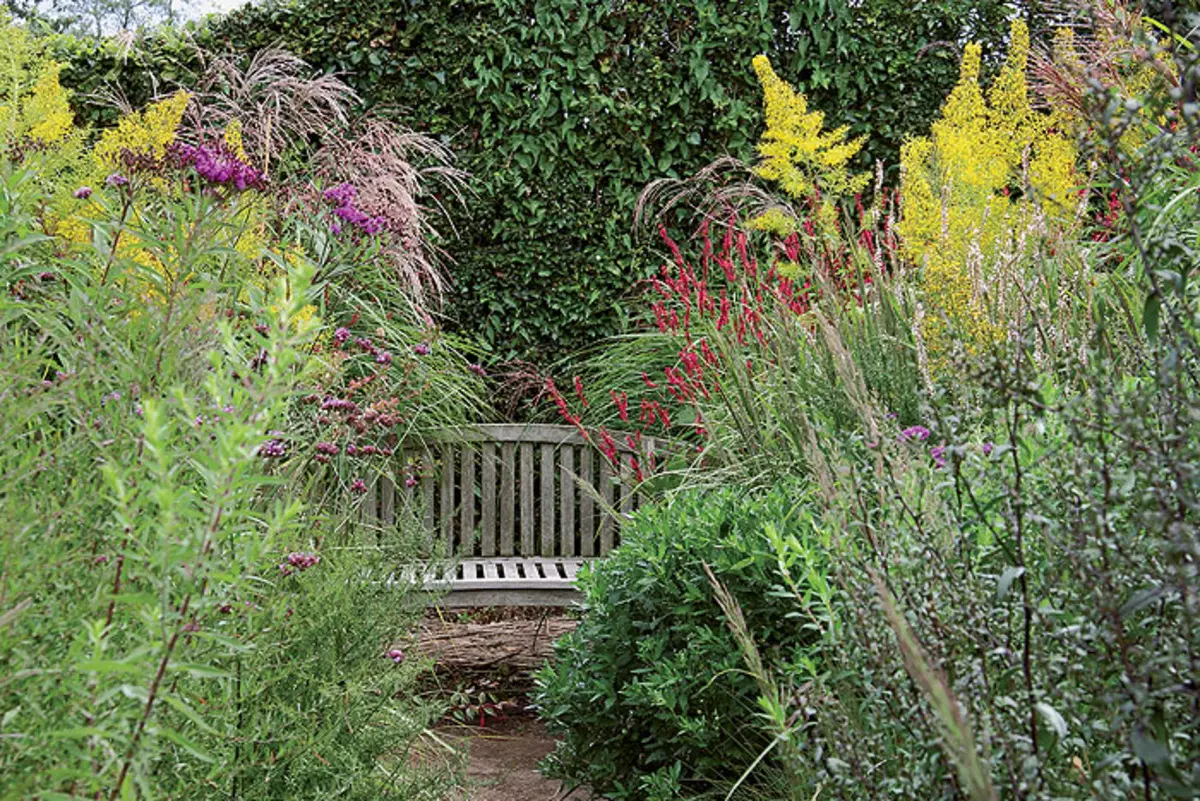
|
11, 15. Herbs are used to decorate stairs: Honechloe's drop-down cascades are well perished at low steps, and the prayer is suitable for the front staircase decorated with vases.
16. High varieties of MiscuTus (for example, graziella variety) include in the composition of high and very high plants, such as sunflowers, gelleniums, clopogones, some ASTR varieties. Gusto plants in the flower bed will support each other.
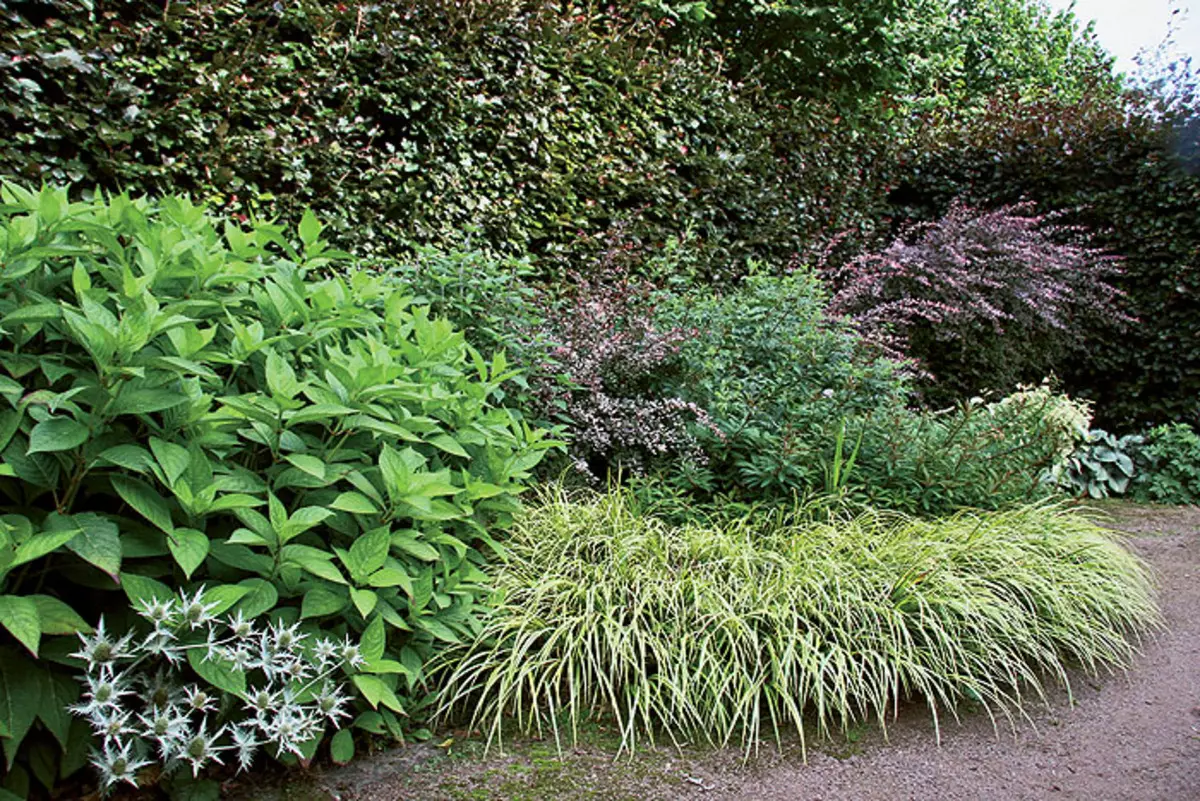
| 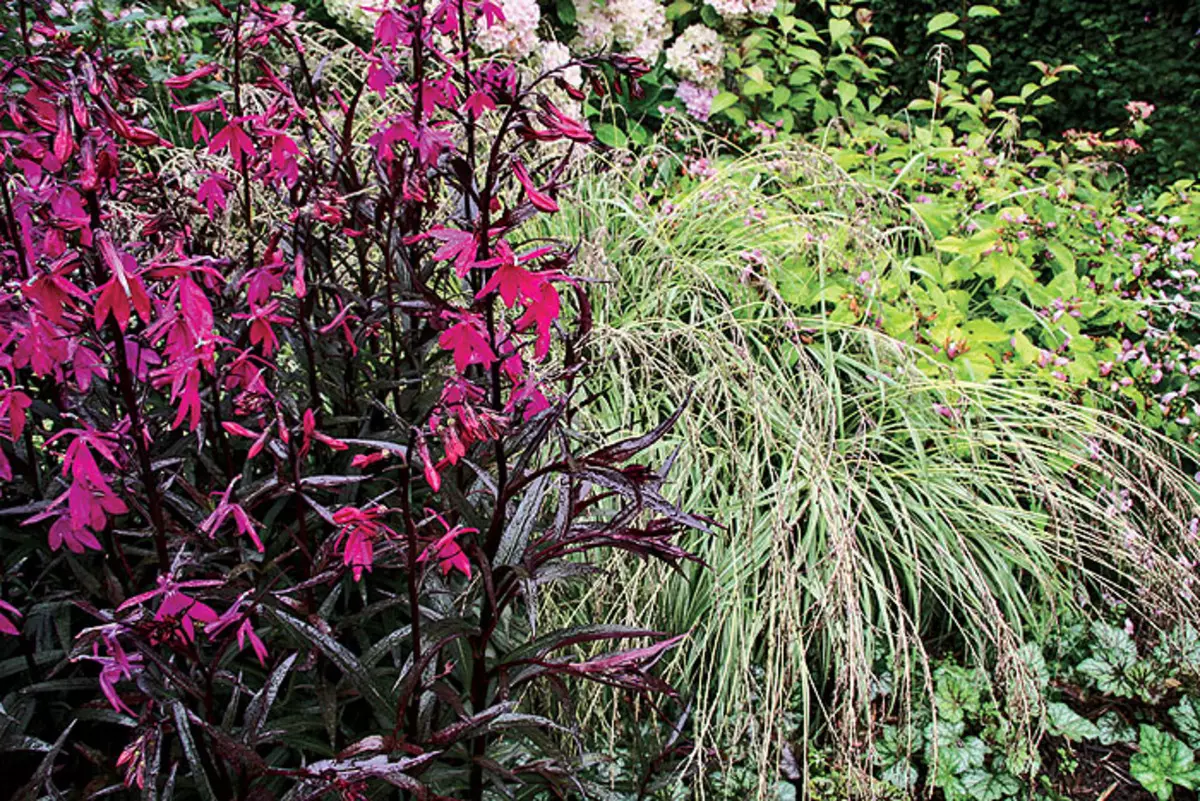
| 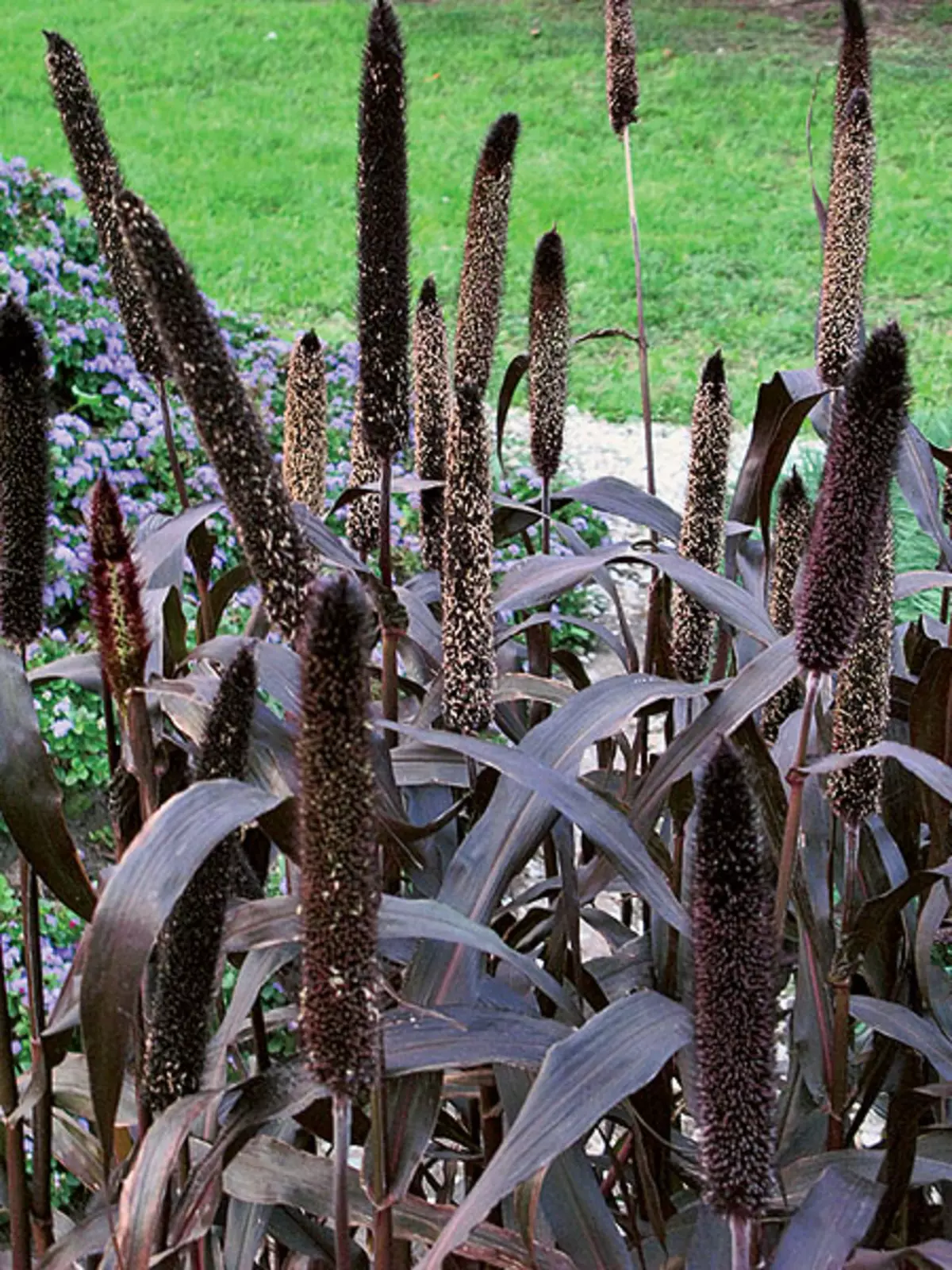
|
17, 18. Many cereals during the season change the color of the leaves. So, the Honechlow is a transition from green or golden yellow to pink and apricot tones.
19. Peristo-bristle-creek annual, with an unusual bronze-burgundy color.
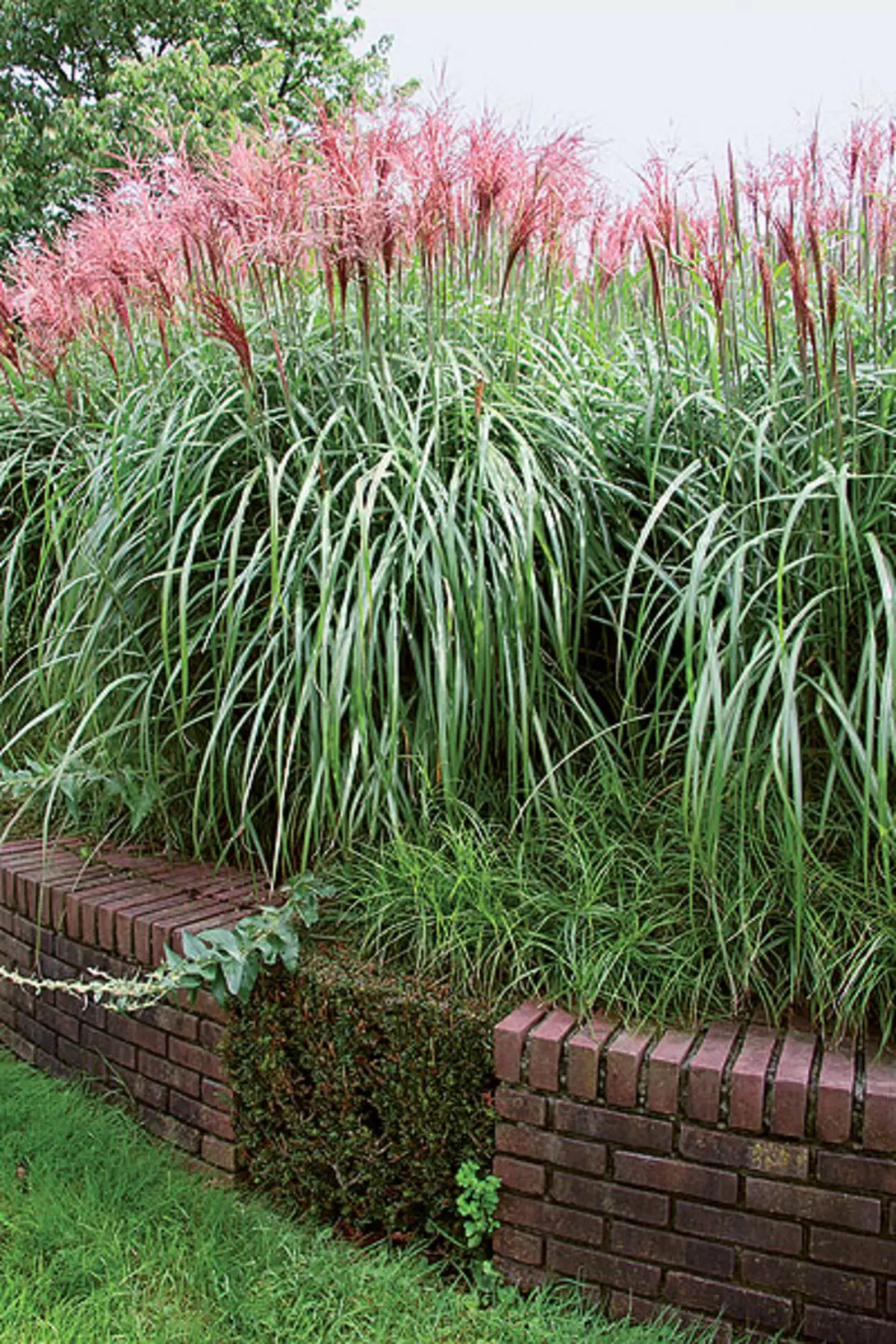
| 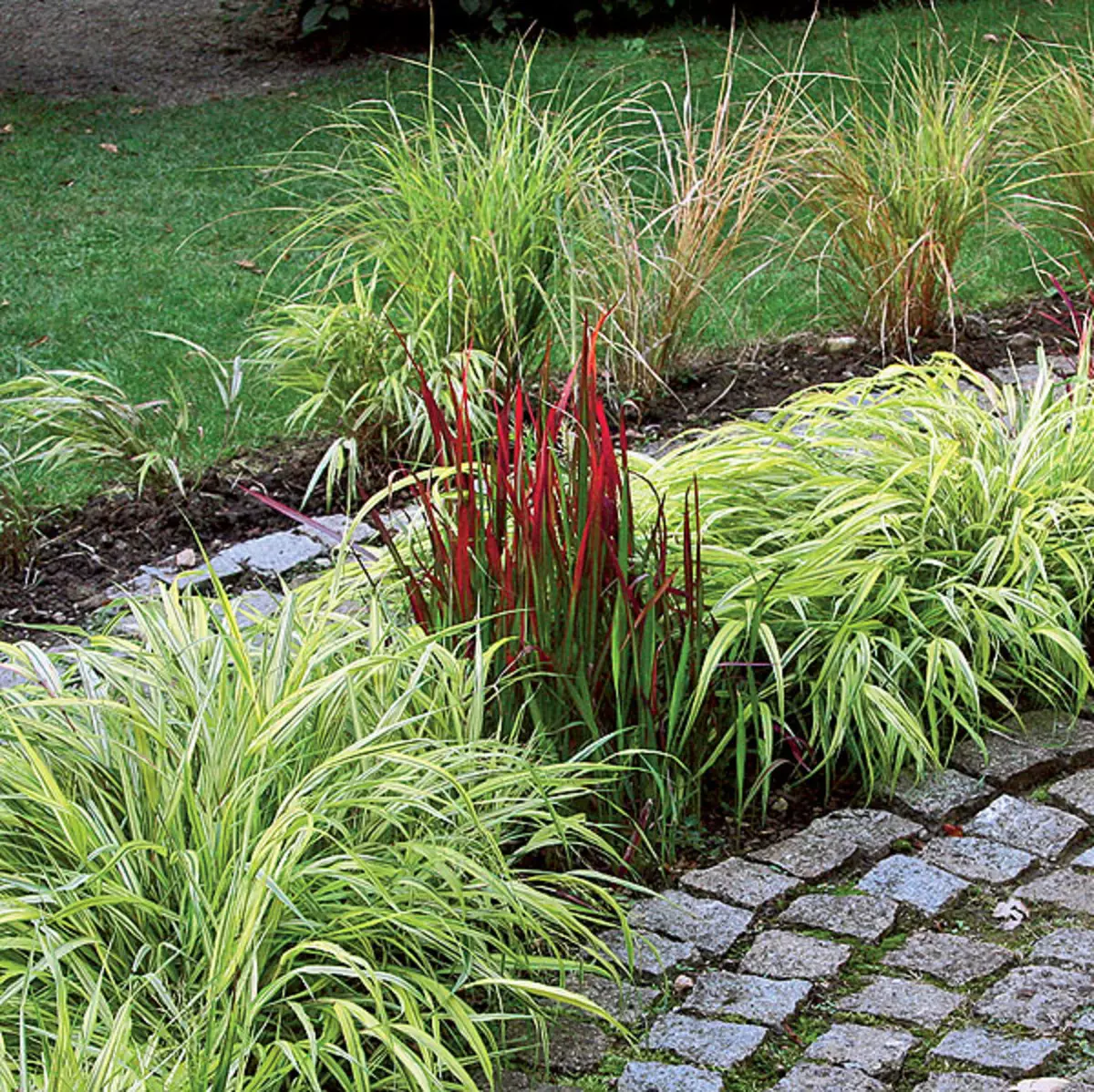
| 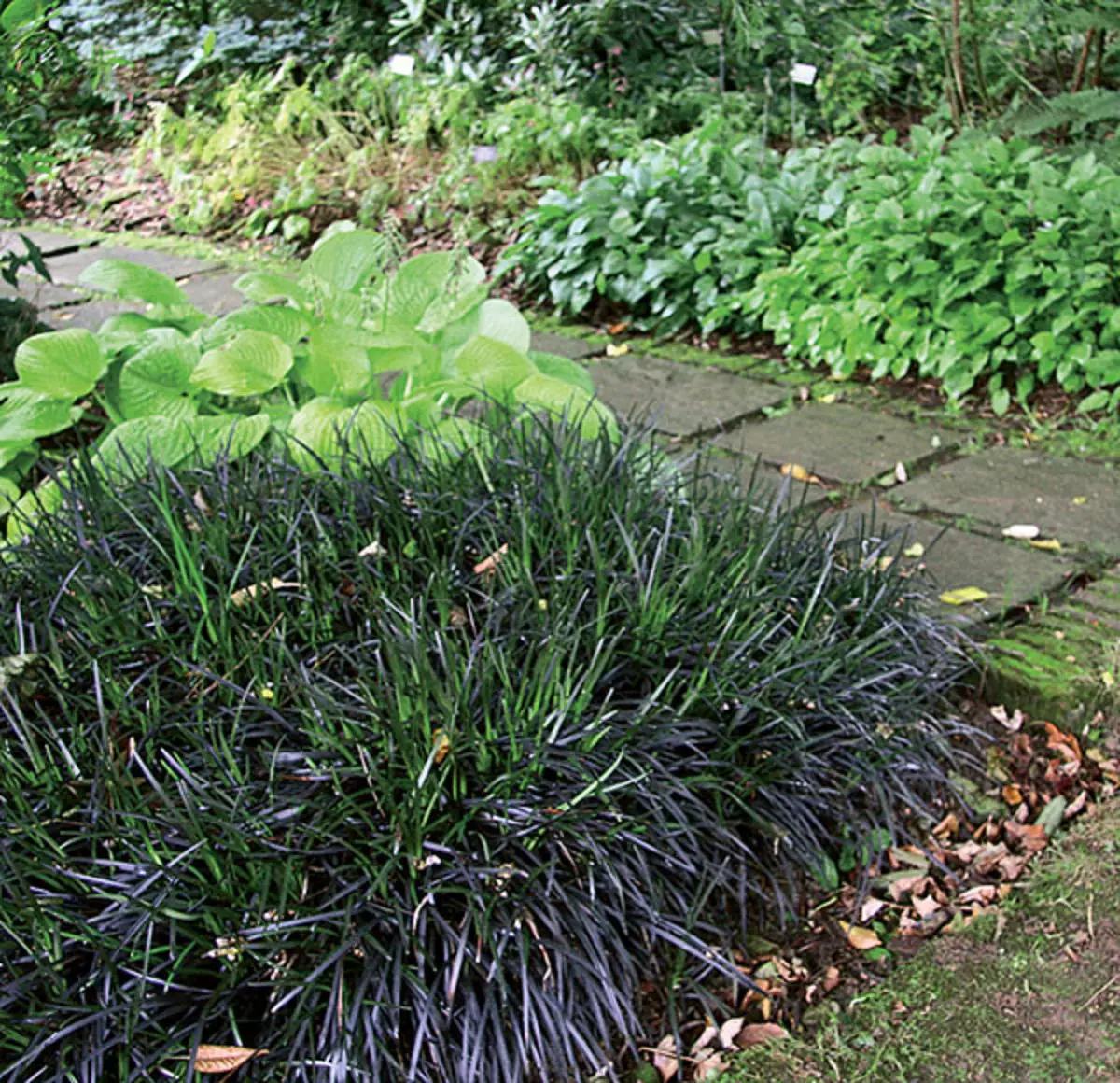
|
20. Some Miscantus varieties are so frost-resistant that they can be grown on raised flower beds.
21, 23. The paved platform near the well is framed by plantings of cereals. The soft pillows of Honechloly contrast with rigid, holding the vertical form of arrows of the impers.
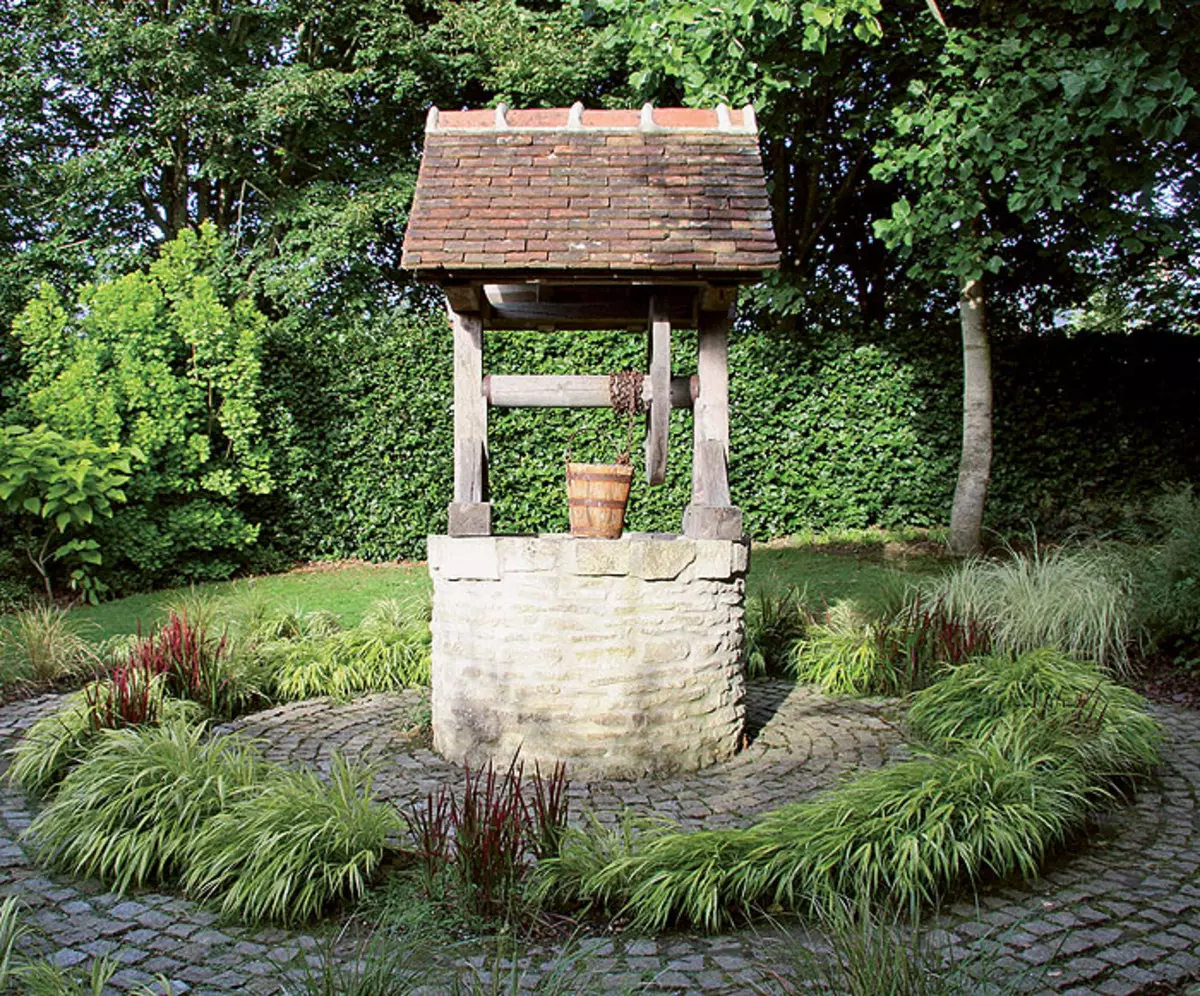
| 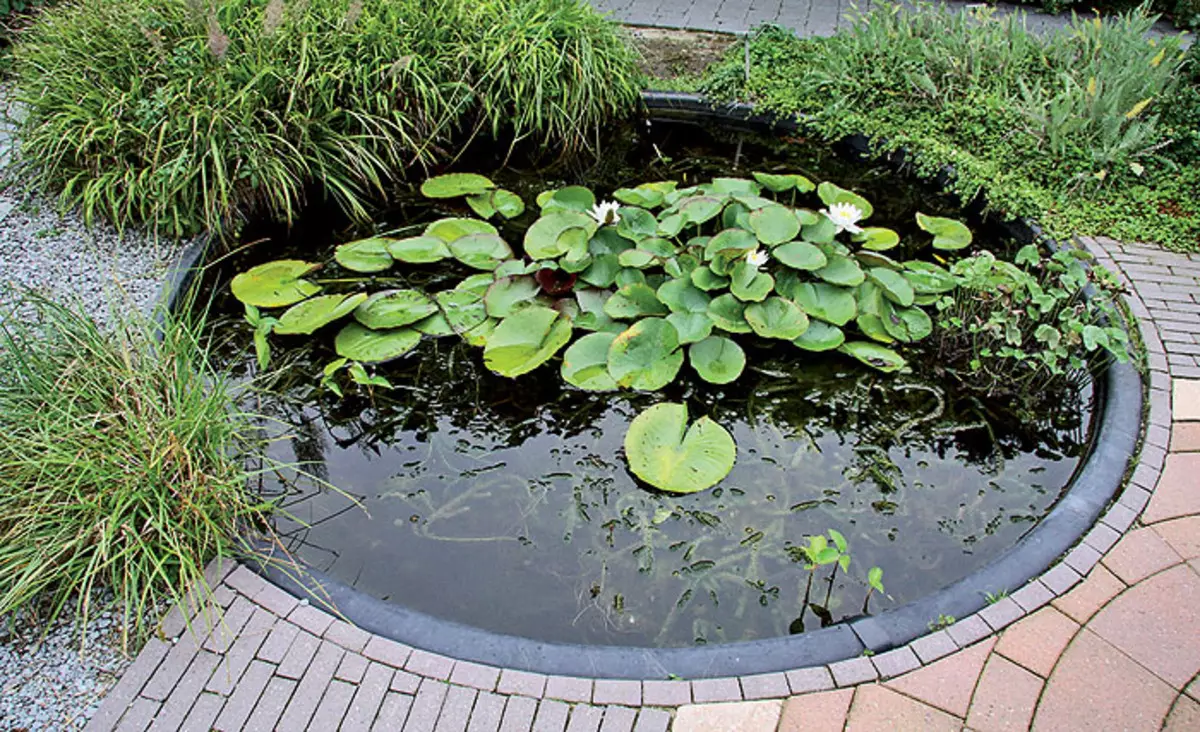
| 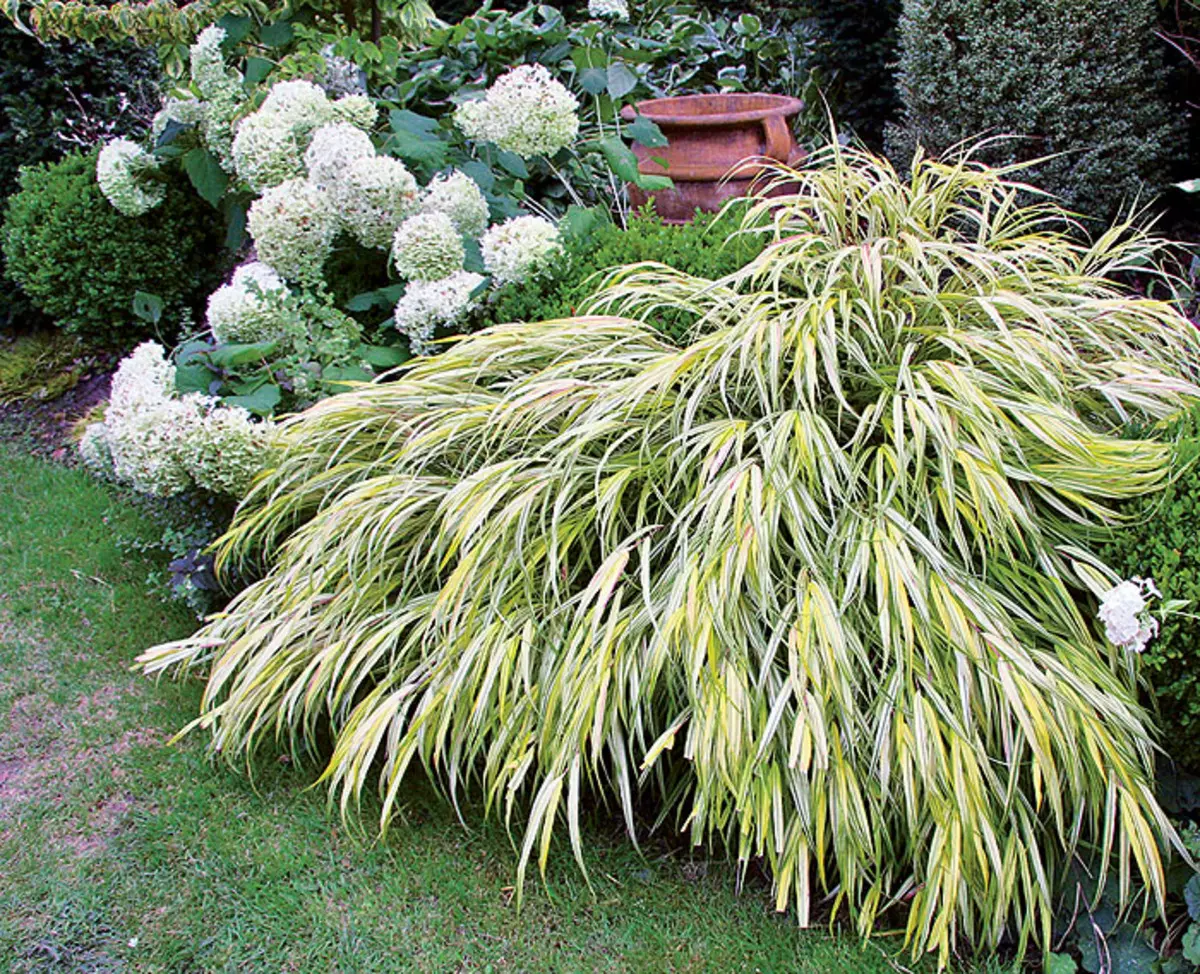
|
22, 24, 25. In love area of the garden along the track, near the pond or near the wood landing, decorative herbs are appropriate. It is only important to choose those varieties that will be comfortable in these conditions (light, humidity, soil) and which will be combined with their surroundings in color and height.
The editors thanks the Center for Garden Art "Gertrud" and personally Tatyana Koisman, a landscape architect and director of the Center, for helping to prepare the material and conducting surveys within the framework of the Greater Places of Europe-2008.
